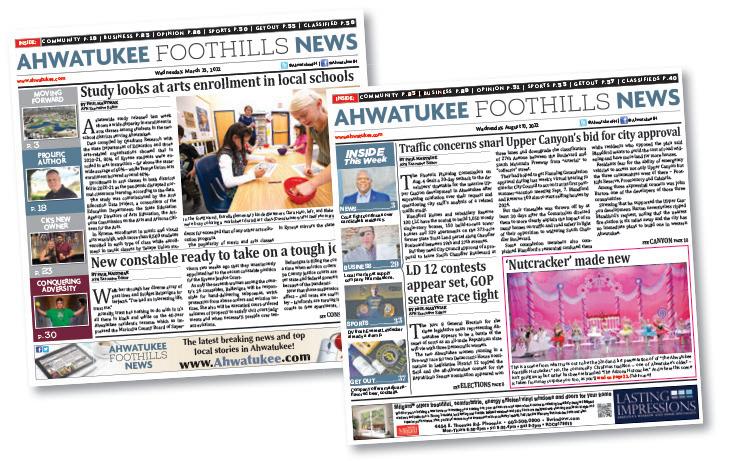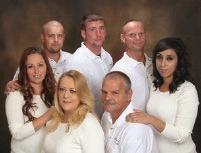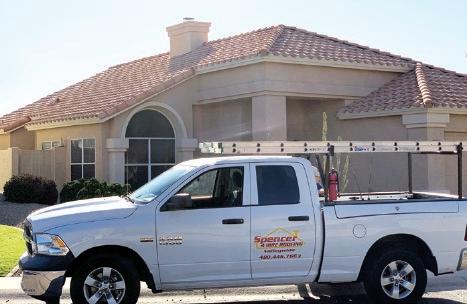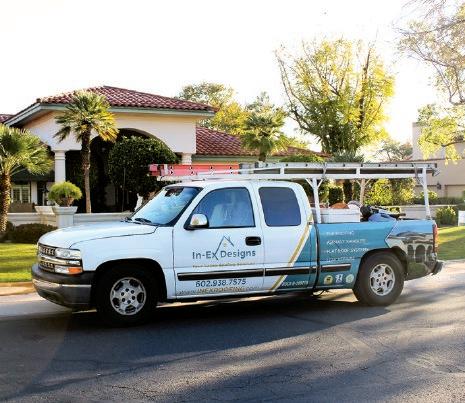




www.ahwatukee.com






www.ahwatukee.com
With Phoenix City Council preparing to take up two controversial zoning code amendments next Wednesday, Sept. 6, an Ahwatukee expert on real estate law has shed some light on a big question involving the measure permitting casitas in the backyards of single-family homes.
And that in turn raises questions on how
BY PAUL MARYNIAK AFN Executive EditorPlanning an array of security and other improvements to its campuses, Kyrene School District is poised this fall to sell the remaining $19.5 million of the $116.95 million bond issue voters approved in 2017.
At the same time, district supporters are ramping up their campaign to win voter approval of a new $161 million bond issue and $6.5 million capital budget override in the all-mail Nov. 7 election that will begin Oct. 11. Voters have until Oct. 10 to register for
see KYRENE page 14




much of an impact the measure will have in generating more affordable housing units in Phoenix.
The question involves the right of homeowners associations to prevent member households from building so-called Accessory Dwelling Units, or ADUs.
It was raised but never answered by city planners when the Ahwatukee Foothills Village Planning Committee considered the measure for a recommendation on July 24.
Club West resident and real estate lawyer Patrick MacQueen said it appears the measure’s current form would allow HOAs to block a homeowner from building a casita.
“Many people want to know whether a homeowners’ association can prevent a homeowner from constructing an ADU,” MacQueen said, “even if an ADU would be
see
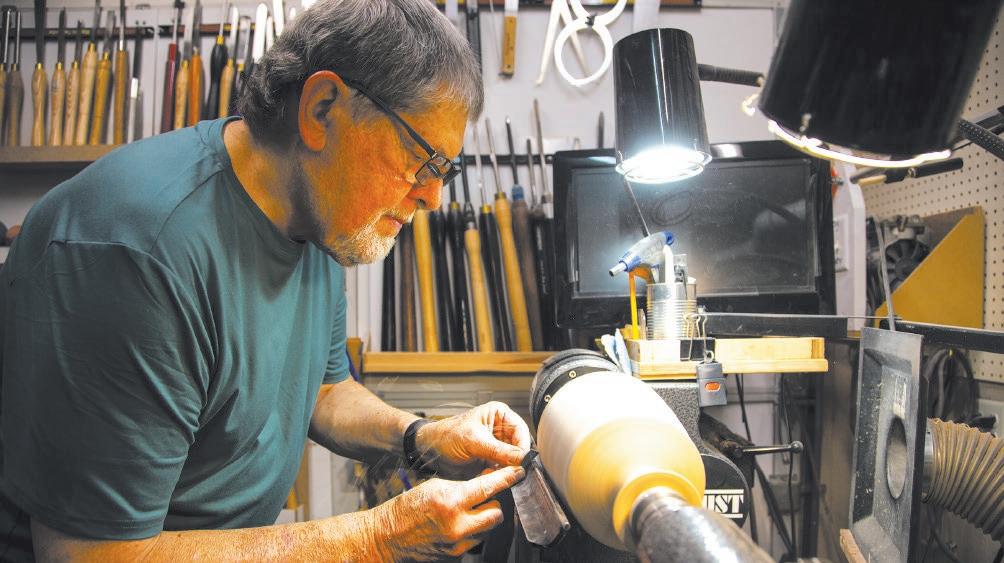


























The Ahwatukee Foothills News is published every Wednesday and distributed free of charge to homes and in single-copy locations throughout Ahwatukee Foothills.
Times Media Group:
1900 W. Broadway Road, Tempe, Arizona, 85282 Main number: 480-898-6500
Advertising: 480-898-5624
Circulation service: 480-898-5641
Steve T. Strickbine VICE PRESIDENT
Michael Hiatt
ADVERTISING STAFF
National Advertising Director
Zac Reynolds 480-898-5603 zac@ahwatukee.com
Advertising Sales Representatives:
Laura Meehan, 480-898-7904, | lmeehan@ahwatukee.com
Katie Mueller, 480-898-7909 kmueller@TimesLocalMedia.com
Classifieds/Inside Sales:
TJ Higgins, 480-898-5902 tjhiggins@TimesLocalMedia.com
Steve Insalaco, 480-898-5635 sinsalaco@TimesLocalMedia.com
NEWS STAFF
Executive Editor:
Paul Maryniak, 480-898-5647 pmaryniak@ahwatukee..com
GetOut Editor: Alex Gallagher | 843-696-6442 | agallagher@TimesLocalMedia.com
Sports Editor:
Zach Alvira 480-898-5630 | zalvira@TimesLocalMedia.com
Production Manager: Courtney Oldham | 480-898-5617 production@TimesLocalMedia.com
Designer: Ruth Carlton | rcarlton@TimesLocalMedia.com
Photographer:
David Minton | dminton@TimesLocalMedia.com
Reporters:
Cecilia Chan. 480-898-5613 | cchan@@TimesLocalMedia.com
Circulation Director:
Aaron Kolodny 480-898-5641 | aaron@TimesLocalMedia.com
Ahwatukee Foothills News is distributed by AZ Integrated Media, a circulation service company owned by Times Media Group. The public is limited to one copy per reader. For circulation services please contact Aaron Kolodny at aaron@TimesLocalMedia.com.
To start or stop delivery of the paper, please visit: https://timespublications.com/phoenix/ or call 480-898-7901
To get your free online editiona subscription, please visit: https://www.ahwatukee.com/e-subscribe/
WRITE A LETTER
To submit a letter, please include your full name. Our policy is not to run anonymous letters. Please keep the length to 300 words. Letters will be run on a space-available basis. Please send your contributions to pmaryniak@ahwatukee.com.
The Ahwatukee Foothills News expresses its opinion. Opinions expressed in guest commentaries, perspectives, cartoons or letters to the editor are those of the author.
The content and claims of any advertisement are the sole responsibility of the advertiser. The Ahwatukee Foothills News assumes no responsibility for the claims or content of any advertisement.
© 2023 Strickbine Publishing, Inc.
At a time when many East Valley school superintendents confront continuing enrollment declines, Dr. Chad Wilson confronts a very different kind of challenge:
Planning for the continuing increase in the number of high school juniors and seniors who are flocking to the East Valley Institute of Technology, where he has been superintendent since 2019.
With few exceptions – including Queen Creek Unified and Higley Unified – demographers have painted a gloomy outlook for student enrollment in the region’s districts – including some of Arizona’s largest public school systems.
But students – and even adults looking for a career change – keep on coming to EVIT and its more than three dozen career and technical education programs.
This year alone, EVIT is counting 5,741 students, mostly juniors and seniors who split their school day between their high school and one of EVIT’s two Mesa campuses.
That’s nearly a 20% increase over EVIT’s 2022-23 student count – and well above the 3,828 students who were on campus when Wilson was named superintendent by the EVIT Governing Board.
Indeed, so many students are attending its primary campus on Main Street near Dobson Road that a parking problem looms in the not-so-distant future.
“We’re going to run short on parking before we run out on classroom space,” said Wilson.
“We’re going to have to do something,” he continued. “We’ll be able to kind of figure out a way to get through this year but at some point we’re going to have to look at additional parking space but also ways in which students can get on and off campus in downtown Mesa.”
EVIT draws its high school students from 11 districts as far south as J.O. Combs in Pinal County and as far north as Cave Creek.
Many of those districts also have CTE see EVIT page 4








programs, though none have the variety EVIT offers.
Its biggest feeder districts are the three biggest school systems in the East Valley.
Mesa Public Schools has 1,134 juniors and seniors taking EVIT classes either in the morning or afternoon; Chandler Unified has 817 and Gilbert Public Schools sends 779, according to EVIT.
But other East Valley districts have a fair share of their students trekking either to downtown Mesa or EVIT’s other campus on Power Road next to Arizona State University’s Polytechnic campus.
Tempe Union sends 528 students to EVIT, Queen Creek Unified’s 306 students exceed the 284 who come from Higley Unified and the 240 who come from Scottsdale Unified.
And in all cases, those numbers are increasing for what Wilson sees as three main reasons.
One reason is EVIT’s shift in marketing to students by focusing on junior high and middle schools rather than high school sophomores.
Wilson said it wasn’t too long after his appointment that he realized that by “by
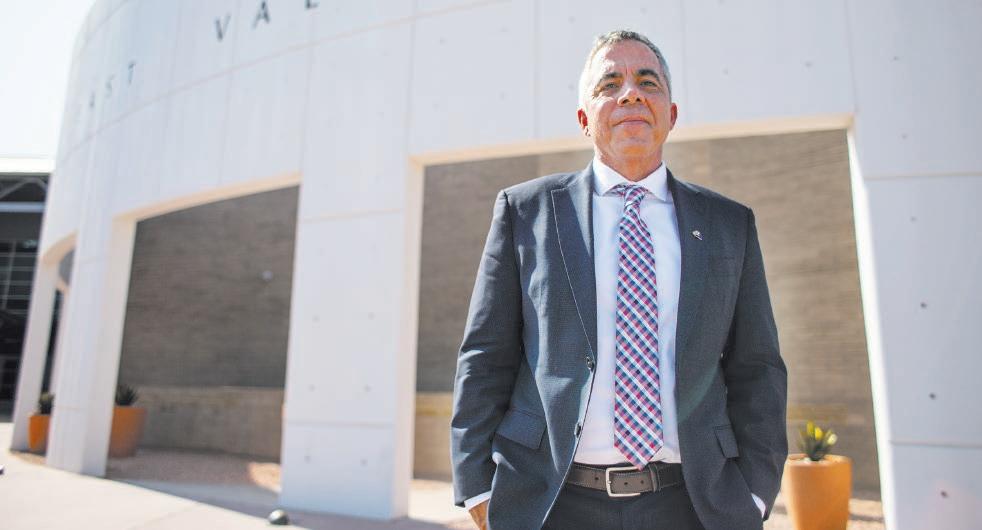
the time a student is finishing their sophomore year…their kind of game plan to get through high school has already been created and it’s really hard to change.”
“So, our thought process was to get into younger grades,” he said, “and start talking about career development, CTE in general.”
Perhaps an even bigger reason is a rethinking about the future among many




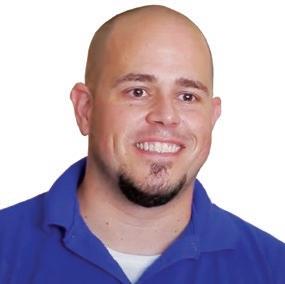
high school students – particularly as the cost of a college or university education continues hitting new heights.
“As a state and as a country, I think we have begun to shift our thinking around the idea that college is great but college isn’t necessarily the only career pathway,” Wilson explained.
“I think that more people are beginning to have that realization and realize
that you can make a great income and have a quality of life through some of the programs that we offer.”
Ironically, the pandemic reinforced that thinking, Wilson believes, citing COVID-19 as the third driver of EVIT’s growing enrollment.
At the same time, COVID and virtual learning hammered public school enrollment, Wilson believes it showed many kids the importance of various essential services that produced the everyday heroes of the pandemic.
“I think what people began to realize is the work that we do, the programs we offer, in many ways form the backbone of our country – it’s the backbone of the American dream,” Wilson said.
“I think when you see the health sector, the first responders, the industrial trades, the mechanics, the plumbers, the HVAC industry – all those industries had to still keep America running. And I think that created a sense of an awareness that maybe wasn’t there before.”
Three of the five programs that draw the most students at EVIT support that





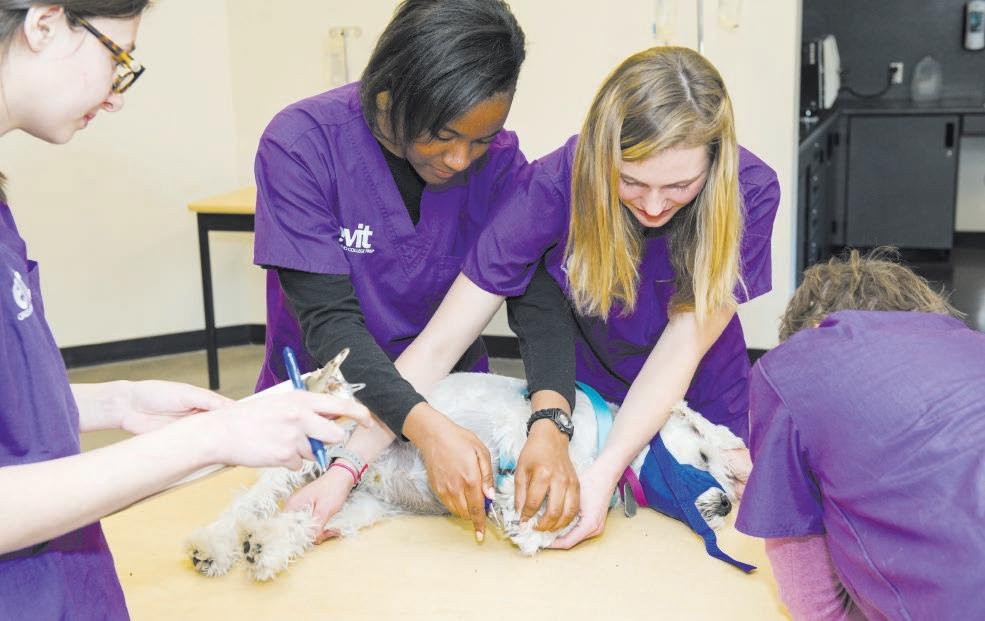
departments.
theory.
While cosmetology is tops with 816 students, the next three highest enrollment numbers are in medical assistant with 646, automotive technology with 412 and welding with 367. Rounding out that topfive list is veterinary assistant with 305.
The rest are scattered across a diverse and broad array of programs like digitalrelated fields, early childhood education, interior design and culinary arts, to name a few.
As he looks to a future of continuing enrollment increases, Wilson and his team, along with the EVIT board, are strategizing how the two campuses will accommodate the influx while also meeting the needs of tomorrow’s economy.
Partly that includes looking at future labor demands and offering courses that will satisfy them.
For example, Wilson said, “In our welding program, one of the things we knew was going to be needed here in the valley was with all the semiconductor work and business that is coming.
“We knew that orbital welding was going to be a component that was needed in that industry, and we didn’t offer orbital welding. When we realized that that was going to be a needed aspect of workforce development within the Valley, we brought orbital welding into our welding program.”
EVIT also has partnered with the Superstition Fire and Medical Rescue Department to start a firefighting training program that will help smaller rural fire
Wilson said he’s also looking at ways to get more out of the downtown Mesa complex by extending program offerings in the late afternoon since the high school programs usually end by 2:30 p.m.
“That doesn’t mean we can’t run another high school program from, say 3:30 to 5:30,” he said.
“If we look at it that way, then all of a sudden we’ve added another third of space because we’ll be utilizing space with more hours than we historically have had.”
Buoyed by legislation signed by former Gov. Doug Ducey, EVIT also is planning to soon start offering associate degrees in some programs, creating the potential for more adults of all ages who need a twoyear degree in a more technical field.
With the first such associates program due to start in January, Wilson believes such programs will attract “individuals that are wanting to up-skill or individuals that are underemployed and want to get employed at a higher opportunity. That’s what that programming will be for.”
Wilson said he and the board are also mindful of the consequences of growth, asking themselves, “If we grew 1,000 students on the high school side and another 1,000 in the same year on the adult side, will our system be able to handle it?”
He’s confident EVIT will, especially on the adult side.
“As we roll into the next year,” he said, “that’s when we’re going to really start seeing our adult education numbers increase as well.”




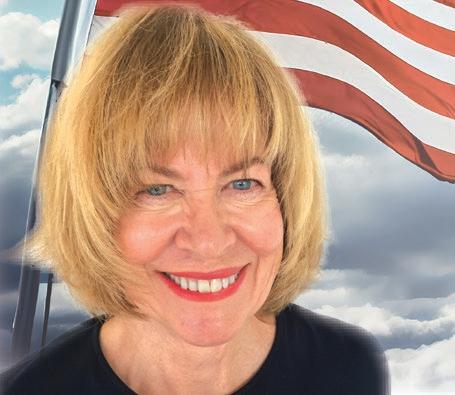




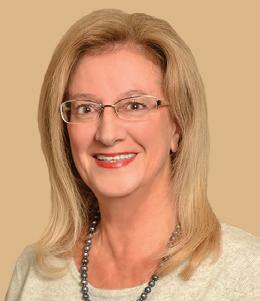



The president of the Cactus League said last week that Arizona communities need to continue investing in the spring ball stadiums used by the major league teams.
But Chris Calcaterra said this isn’t being done for the benefit of the team owners, many of whom are billionaires. Instead, he said, the dollars spent to improve the facilities are for the benefit of the fans.
total attendance this year was down by close to 12%, with fewer games played this year –216 versus 231 in 2018.
But even with that, the average attendance per game of 7,246 was still 5.7% lower than five years ago.
According to the study, about 60% of visitors came from out of state who stayed an average of four nights and attended three games.




The questions arose Friday as an economic impact study commissioned by the league said the 2023 season generated $418.5 million.
In real terms, the report says, that’s about 4.4% below 2018, the last year there was a full season not interrupted or cancelled by a strike or COVID.



That was caused in part by the fact that
Based on interviews with visitors, the Seidman Research Institute at Arizona State University figured they spent a total of $345.3 million this year, about $144 million of that on hotels and other accommodations, $77 million at bars and restaurants and the balance on everything from game tickets and souvenirs to rental cars and other entertainment.
The report, however, says that overall
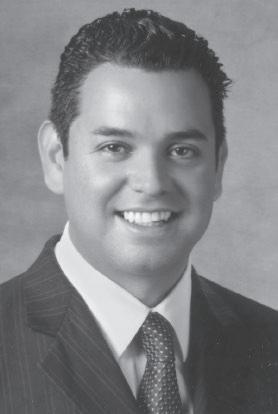
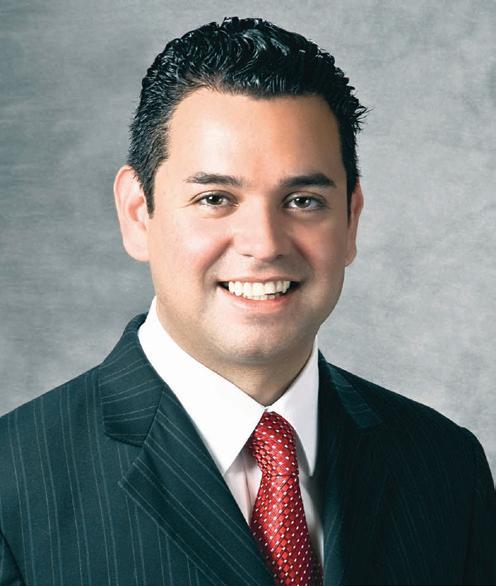
spending this year of about $421 a day is about $46 less than what Cactus League fans were shelling out in 2018.
“We can never take spring training for granted,’’ Calcaterra he said.
“To ensure the vitality of the spring training industry in Arizona we must maintain and improve our facilities to meet the ever-changing demands of the industry,’’ he said. “That requires investment.’’
Calcaterra said the report released Aug. 25 shows that investment “pays big dividends.’’ Aside from the revenue generated for local businesses, the report says it produced $36.6 million in state tax revenues and $8.2 million for local governments.
As to public dollars, Calcaterra said that’s necessary for the “strategic plans in updating facilities.’’
He said this isn’t a question of benefitting the team owners who have come to see the cash generated from spring training as part of their revenue stream.
“I think the Cactus League is focused on fans and bringing tourism to Arizona,’’ Calcaterra said. “And that’s where we really stay focused at.’’
He said some of the facilities are “aging.’’
Calcaterra said the funding is for “making sure we’re first in class and best in class for our fans and fan base.’’
“So you’ll see those improvements occur in stadiums and the facilities to keep that action and the attraction for fan bases to come to Arizona,’’ he said. “The mission of the Cactus League is attracting fans to Arizona.’’
Gov. Katie Hobbs, who was at Friday’s event to release the data, said she is fo-
cused on what the league does for Arizona, including more than 6,000 jobs and $270 million in wages.
The noted about 60% of the fans surveyed come from outside the state.
“Save for our natural wonders like the Grand Canyon, I can’t think of anything that brings that level of outside interest,’’ the governor said.
But Hobbs sidestepped the question of the use of tax dollars to build and update facilities designed for teams that are owned by billionaires.
“I don’t have an answer for that,’’ she said.
The report says that the economic benefits are felt beyond Maricopa County where the facilities are located and where those attending the games stay and eat.
It says that more than 40% of the fans who come here from other states for spring training visit say they also visit North Central Arizona, the area including Sedona, Prescott, Payson and Globe.
That percentage rises to 60% for international visitors, though the number of Cactus League fans among them is much smaller.
A third said they visited or plan to visit Northern Arizona including Flagstaff, the Grand Canyon and Monument Valley. About a quarter listed Southern Arizona on their plans, with much smaller margins for the rest of the state.
The report said spending by out-ofarea visitors appears to be linked somehow to the team they are following.
Non-Arizonans coming here for the Diamondbacks spent only about $345 a day. At the other extreme, fans of the San Francisco Giants dropped about $501 each day.













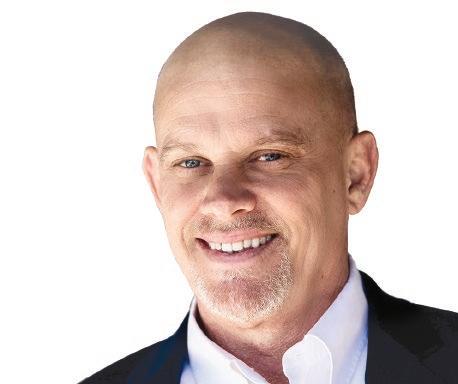





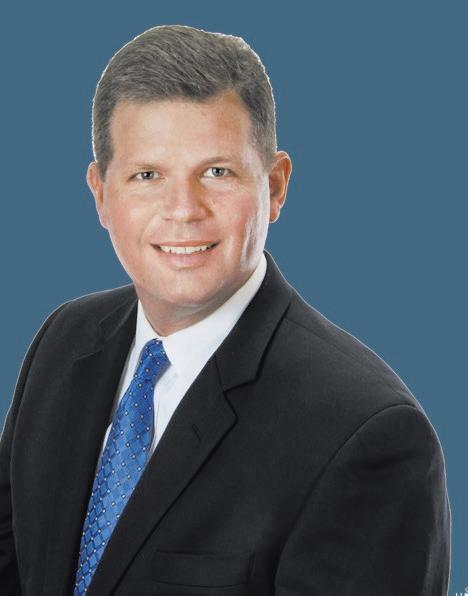


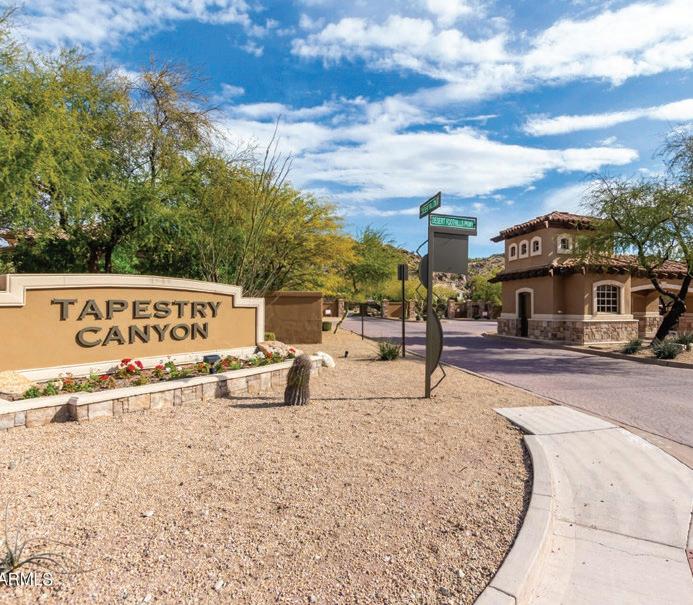



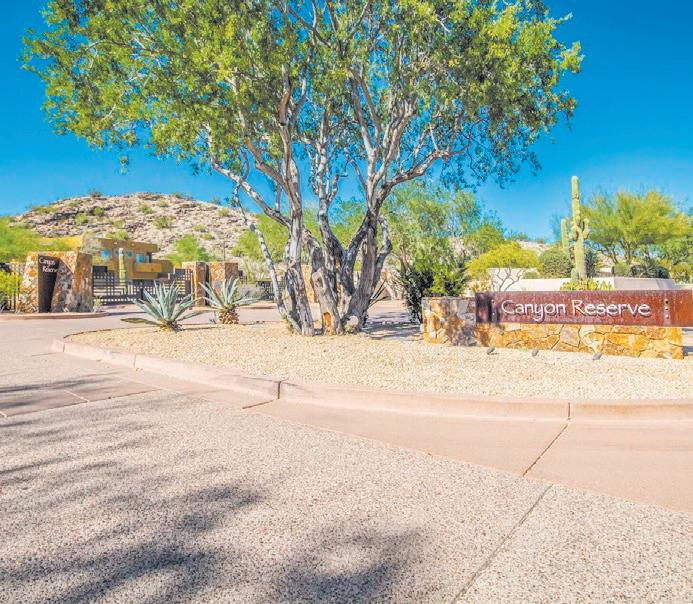









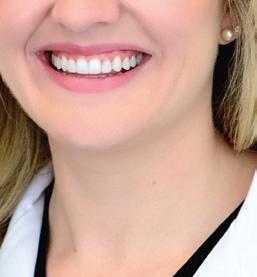











Unqualified Arizonans may be getting state licenses to drive because of practices of private companies authorized by the state Motor Vehicle Division to issue them, according to a new report.
Auditor General Lindsey Perry said that means not only people on the roads who lack driving skills but also that fraudulently obtained documents “may facilitate fraud, identity theft, terrorism, and other crime.’’
Perry said that’s only part of the problem her staffers discovered in reviewing the operation of the MVD and, more specifically, its contracts with third-party providers.
She said there was evidence some of those same companies were issuing titles without the necessary documentation to prove that ownership was being lawfully transferred.
Perry said there were other situations where there was no disclosure of the odometer reading, a situation she said could lead to fraud, with buyers ending up with a vehicle where the recorded mileage had been rolled back.
The report says, though, this isn’t simply a problem of these third-party sites not doing a good job.
It says MVD sets up quality assurance standards and requires these private entities to do self-reviews of the transactions they have performed. And the state agency has access to these reviews.
But auditors found that the third-party firm failed to review and provide results of those self-reviews to MVD in about 12 percent of the selected transactions in a seven-month period. More to the point, MVD didn’t catch it.
“In fact, one third party failed to review more than 5,700 transactions during this time frame,’’ Perry’s report says.
“However, MVD inaccurately recorded that this third party has monthly accuracy rates in the high 90% range through calendar year 2022 despite lacking any information about the accuracy rate for the nearly 6,000 selected transactions.’’
In a formal response to the audit,
MVD Director Jennifer Toth did not dispute any of the findings. And she said recommendations in the report for better oversight will be implemented.
Arizona law makes MVD legally responsible for various services to the public, including issuing certificates of title, vehicle registration, driver licenses and identification cards.
That last category can include a special category known as a “Travel ID’’ which allows holders access to certain federally regulated facilities and boarding of commercial aircraft after they provide extra identification.
But the law also allows MVD to contract with outside agencies which may be in more convenient locations and have longer hours but also can charge additional fees beyond what the state collects.
As of last October, the state contracted with 96 third parties that operated 175 locations in the state, with 67 of those locations authorized to issue drive licenses and ID cards.
In the most recent fiscal year those private locations issued more than a third of the titles, registrations, driver licenses and ID cards.
In a random check of 42 driver license and identification cards, Perry said her staff found eight were issued without documentation showing that the customers were qualified.
That includes five without documentation they had passed a behind-the-wheel skill test, two that showed no proof they had been screened visually and one where there was no evidence of either.
Perry said that’s a problem.
“These tests help protect public safety by ensuring only those individuals who are qualified to operate a vehicle are on the road,’’ the audit states.
“Failure to verify that an individual is qualified to receive a driver's license puts public safety at risk by allowing unqualified and potentially unsafe drivers to operate motor vehicles on public roadways.’’
But that, the report says, is just part of the problem of people not being properly screened before getting state-issued
see FRAUD page 10





602-430-3917 MendozaTeam.com Ahwatukee’s











4 BR / 2.5 BA / 2,283 SQFT
Enjoy the privacy of this premium hillside view lot. Just completed new carpet and interior paint.
Listed For $497,500
5 BR / 3 BA / 2,736 SQ FT
Spacious former UDC model home with South Mountain views. Private backyard with large pool.
Listed for $625,000
5 BR / 3.5 BA / 5,079 SQFT
Impressive custom with mountain views. Abundant amenities including professional sport court in private backyard.
Listed for $1,325,000
3 BR / 2 BA / 1,500 SQFT
Great remodel with superb updates in kitchen and baths. 2017/2018 roof. 2017 exterior paint. 2016 HVAC.
Listed for $489,500
5 BR / 3 BA / 3,394 SQFT
Complete remodel. New roof, two AC units, flooring, kitchen, baths, plumbing and more.
Listed for $799,000
5 BR / 4.5 BA / 4,391 SQFT
Superb single level with detached casita. Shutters, travertine and laminate flooring. New roof in 2022.
Listed for $1,225,000








The president of the Desert Rivers Audubon Society has been name Volunteer of the Year by the Arizona Parks and Recreation Association.
“We’re excited because the parks department cited her work with Audubon in addition to her volunteer service to the town in nominating her for the award,” said Elizabeth Farquhar of Ahwatukee, a Desert Rivers spokeswoman. “This woman works tirelessly on behalf of birds and the environment – and still finds time to volunteer at the senior center.”
“She’s an excellent bird guide, especially for people who can’t tell a bird from a dragonfly,” Farquhar added.
Vyvial, a Gilbert resident, is a longtime volunteer at AZCEND, the town’s senior center located in the Gilbert Community Center.
“When looking at the impressive list of Theona’s successes as a volunteer with the Desert Rivers Audubon Society, it is impossible not to acknowledge the incredible impacts of her ideas, love for conservationism, and educating her community on local bird species and bird safety,” said Tyler Smith, Gilbert’s recreation supervisor.
Longtime Desert Rivers member Gwen Grace said that “working with Theona has broadened my view to support the environment and birds by collaborating with other Audubon chapters, educating businesses and even bringing these issues to
state representatives.”
Vyvial’s interest in birds grew out of her hobby as an amateur paleontologist. From that experience she became intrigued with the link between dinosaurs and birds.
Vyvial was soon an active Audubon Society member and bird walk leader. She served as Desert Rivers’ membership director, starting in 2017 before her election as president in 2021.
Under her leadership, the chapter has expanded its programs and has committed to hands-on conservation projects.
This broadened the chapter’s reach for both audience and speakers, and the Zoom meetings remain popular even though in-person programs have resumed at the Southeast Regional Library.
Vyvial has also spearheaded a new conservation effort aimed at reducing the number of birds that die after flying into windows. The chapter also runs doit-yourself workshops on window treatments that deter birds.
The chapter has continued to offer its free family bird walks at Gilbert Riparian Preserve and Veterans Oasis Park in Chandler and maintains a hummingbird habitat in Chandler. These and other programs focus on the chapter’s mission to “educate and inspire our community to protect birds, wildlife and their habitats.”
Info: desertriversaudubon.org.

IDs.
“Individuals who fraudulently obtain identification documents may do so to commit other crimes, such as fraud or acts of terrorism,’’ Perry said. And that is particularly true for those who are issued Travel IDs.
Then there’s the issue of vehicle documentation – or lack of it.
“Transferring a vehicle title from one party to another without requiring a customer to demonstrate proof of ownership increases the risk of vehicle theft and other fraud that can cause financial hardships for victims,’’ the report said.
“Victims may face financial hardships from the theft of their vehicles or from unknowingly purchasing a vehicle that was stolen through vehicle fraud.’’
The other form of fraud, Perry said, is making a vehicle appear more valuable than it is by rolling back the odometer.
She cited data from Carfax, a private company that provides vehicle data to individuals and businesses, a service used by some car buyers to determine the history of a car or truck.
“According to Carfax, as of December 2022, more than 1.9 million vehicles were on the road with rolled-back odometers, including over 54,000 vehicles in Arizona,’’ the report says.
“Further, Carfax reported consumers lose an average of $4,000 in value from unknowingly buying a car with a rolledback odometer, which does not include unexpected maintenance costs.’’
Perry said MVD began reviewing whether third parties completed self-reviews this past October and identifying those which were not. Yet even after that, she said the agency still was not holding some of these companies accountable for failing to complete reviews.



























The educator who has led Valley Christian Schools almost since their inception is retiring and being replaced by an alumnus.



Dan Kuiper is capping his 41 years as Valley Christian’s first and only Head of School and will be replaced next school year by Troy Thelen, who graduated from its highs school in Chandler in 2003. Valley Christian’s elementary school is in Tempe.
Thelen will become Valley Christian’s 10th overall leader and only its second Head of School when both men make the transition next June 30. Kuiper will remain on the school’s board.
Established in 1982, VCS has a current enrollment of 1,147 and prides itself on a “distinctly Christian education with excellent academics, championship athletics, award-winning fine arts, cuttingedge STEM programs, and a supporting community.”
Thelen has held the title Assistant Head of School since 2020 and is credited with leading seven consecutive fundraising campaigns. He had bene director of development for six years prior to becoming Kuiper’s right-hand man.
During interviews with stakeholders and community members, the school said in a release, “Mr. Thelen received staunch support as the next Head of School from every group that provided feedback, including current school leadership, department directors, teachers, parents, alumni, donors, and more.”
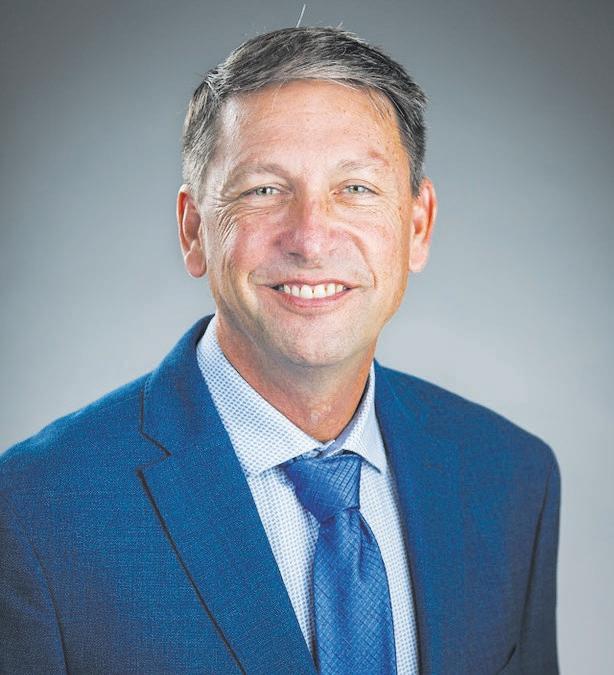
“Troy Thelen is a bold and visionary leader who combines high emotional intelligence and careful listening with a strong desire for accountability, and the courage to push for positive change,” VCS Board President Scott Crouch stated.
“Valley Christian seeks to equip culture changers for Christ, and Troy is the right leader at the right time for Valley Christian Schools.”
Kuiper’s retirement was no surprise to the board since he advised it of his plans two years ago.

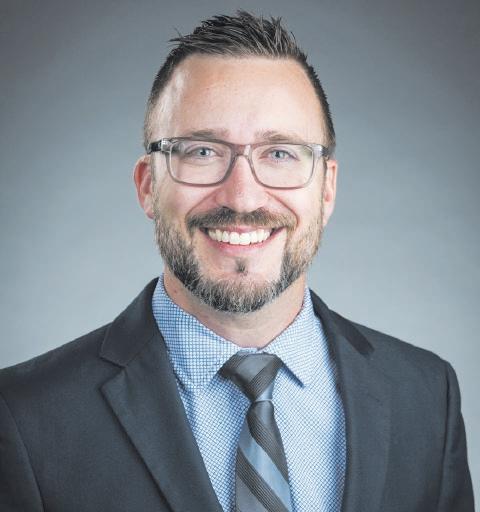
“To countless members of our community, Dan Kuiper is Valley Christian Schools,” Crouch said. “In fact, there is not a single graduate of Valley Christian Schools that has passed through our school without Dan Kuiper on campus teaching, coaching, or somehow serving each of our more than 2,700 alumni and more than 1,100 current students. What an incredible legacy Dan is leaving at Valley Christian.”
Kuiper, who began his career at Valley Christian Schools in 1983 as the school began its second year. served the school in numerous capacities, including biology teacher, anatomy teacher, science department head, academic team chair, head coach for boys and girls track and field and principal.
Under his Valley Christian launched junior high levels in 2018 and the elementary school the following year. see








that election.
That vote will be critical to the district’s plans to spend $36.7 million next school year on capital improvements. The lion’s share of that amount will go to campus construction projects while new buses and improvements to the district headquarters complex also are involved..
Chris Herrmann, associate superintendent and chief financial officer, on Aug. 22 laid out for the governing board the administration’s plans for spending the $19.5 million
He reminded the board of the challenge the district confronts with its 25 campuses.
“The types and amounts of annual projects often can be quite large for a district our size as the average age of our 25 school campuses is now over 35 years,” Herrmann said, noting projects are reviewed multiple times before they are scheduled for funding.
In all, the district has 2.56 million square feet of space to maintain across 350 acres.
He added that voter support for the capital override, formally called District Additional Assistance, and the bond issue is critical because if “we had to rely just on the state funding as the only way to pay for capital projects, that scenario would look very different from what Kyrene is able to do for our students and facilities today.”
Herrmann and Michael LaValle, a public finance expert with the Stifel investment banking company, also said Kyrene is in an ideal position to sell the bonds at a lower interest rate than most

districts because it is only one of five school districts in Arizona with a AAA credit rating.
"This equates to lower borrowing costs for our community when that money has to be paid back,” Herrmann said, adding that Kyrene’s credit rating also shows voters that the district “has a strong financial health and has also been good stewards of taxpayer money.”
But Herrmann stressed that the bond sale this October will cover only a little more than half the district’s anticipated $30.94 million in capital projects planned for the 2024-25 school year.
“If we were not able to secure the bond authorization, we would have to rely on the capital funding provided by the state … that only provides a fraction of the funding versus what we received from our bonds and capital overrides today,” he said.
Capital spending in 2024-25 totals $36.7 million and breaks down into

three board categories.
Those categories include: “maintaining schools” at a cost of just under $31 million; nearly $3.1 million to upgrade the district’s aging school bus fleet; and $2.7 million for improvements to the grounds and buildings on the district’s headquarters.
Kyrene’s Ben Furlong Education Complex at Kyrene and Warner roads comprises 12 buildings on 18 acres. It is anchored by the district administration building, constructed in 1989, and a bus depot built in 1986.
The district in the current school year is undertaking $6.2 million in improvements to the district administration building forcing the governing board to meet for the time being once a month at Kyrene de las Brisas Elementary School in Chandler and once a month virtually.
The nearly $31 million projects covered in the “maintain schools” category include:
• $1.4 million for classroom-related needs, including instruments, athletic equipment and furniture.
• $15.8 million in technology spending for fire alarm systems, classroom presentation equipment, laptops and computers and basic digital infrastructure like servers, internet gear and wireless systems.
• $13.8 million in construction projects that will extend into the summer of 2025. The construction projects include:
• $2.6 million for a new roof at Kyrene del Milenio and repairs to Kyrene de la Mirada’s roof;
• $2.2 million for ballfields and sports courts;
• $2.1 million for HVAC repairs and upgrades;
• $1.6 million for building maintenance;
• $1.5 million for new lights;
• $1.3 million for building weatherization;
• $1.3 million for carpeting;
• $150,000 for parking lot repaving.
Technology spending has totaled $6.8 million in both the previous and current school years and covers broad array of expenses that include software and licenses as well as network infrastructure and classroom equipment.
“Because of the age of our buildings, there are some upcoming sizable projects that … require some pretty large ongoing repairs and maintenance,” Herrmann said.
As for the bond sale and the cost of that borrowing, Kyrene’s exceptionally high credit rating will soften the blow on taxpayers even with the steady increase in interest rates, Herrmann said.
“We have such high credit ratings that impact from having higher interest rates should be cushioned a lot more than districts that don’t have higher ratings and would have more of that higher borrowing cost,” he said.
He said the bigger impact on the district is inflationary pressure on the cost of projects.
“Inflation has probably been a bigger area and some of the price escalations have probably been a bigger factor for us in our ability to stretch those dollars as far as we can,” Herrmann said.
“It’s been very common to see some pretty high inflationary numbers in the world of construction,” he continued, “which makes it harder to keep up with all the projects that we want to do with the defined amount of money that we can sell.”
Two Republican lawmakers want Attorney General Kris Mayes to financially punish the City of Phoenix if it refuses to overturn a city council decision to donate unclaimed weapons to Ukraine.
And the outcome of this spat could affect what other cities around the state are allowed to do with the firearms that come into their hands.
In a new complaint, Reps. Quang Nguyen of Prescott Valley and Selina Bliss of Prescott contends the move violates state laws that generally require firearms that are seized or turned into a city to be sold off or traded for other police equipment. The only exception is when the weapon itself is illegal, like a sawed-off shotgun.
But rather than seek some sort of court order to overturn the move, the pair instead invoked a 2016 law that allows any legislator to ask the attorney general whether the actions by a local government are legal.
That triggers a requirement for the attorney general to investigate and seek a response from the community.
If the attorney general believes the action is illegal, the law requires that person to give the city 30 days to “resolve the violation.’’
If that does not happen to the satisfaction of the attorney general, he or she tells the treasurer to withhold state

revenue sharing dollars and redistribute them to everyone else.
And for a city the size of Phoenix, that could be in excess of $600 million.
For now, it appears the city won’t back down.
The immediate spat is over a Phoenix policy which says any property that is unclaimed for 30 days can be disposed of by the city. Items range from bicycles and motor vehicles to jewelry.
And there also are firearms.
Under the city code, those weapons can be kept for use by the police department. They also can be sent to a museum. And rare or collectible items can be sold at public auction.
But it also permits the city to sell, lend or transfer any firearm “to any local, state or federal law enforcement agency,’’ as long as there is no cost to the city.
Last month the council voted unanimously to authorize the city manager to enter into a contract with DTGruelle, a private company which provides import and export services.
The city would transfer between 500 and 600 unclaimed firearms Gruelle would send to the National Police of Ukraine.
A city spokesman said there is no real difference between a domestic law enforcement agency and one in another country.
Nguyen and Bliss complained at the
see GUNS page 16
Mesa, AZ - When it comes to chronic pain and/ or neuropathy, the most common doctor-prescribed treatment is drugs like Gabapentin, Lyrica, Cymbalta, and Neurontin. The problem with anti-depressants or anti-seizure medications like these is that they offer purely symptomatic relief, as opposed to targeting and treating the root of the problem. Worse, these drugs often trigger an onset of uncomfortable, painful, and sometimes harmful side effects.
The only way to effectively treat chronic pain and/or peripheral neuropathy is by targeting the source, which is the result of nerve damage owing to inadequate blood flow to the nerves in the hands and feet. This often causes weakness and numbness.

As displayed in figure 1 above, the nerves are surrounded by diseased, withered blood vessels. A lack of sufficient nutrients means the nerves cannot survive, and thus, slowly die. This leads to those painful and frustrating consequences we were talking about earlier, like weakness, numbness, tingling, balance issues, and perhaps even a burning sensation.
The drugs your doctor might prescribe will temporarily conceal the problems, putting a “BandAid” over a situation that will only continue to deteriorate without further action.
Thankfully, Mesa is the birthplace of a brand new facility that sheds light on this pressing problem of peripheral neuropathy and chronic pain. The company is trailblazing the medical industry by replacing outdated drugs and symptomatic reprieves with an advanced machine that targets the root of the problem at hand.
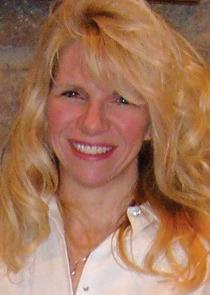
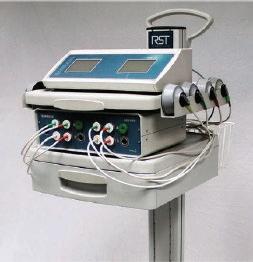
Effective neuropathy treatment relies on the following three factors:
1. Finding the underlying cause
2. Determining the extent of the nerve damage
(above 95% nerve loss is rarely treatable)
3. The amount of treatment required for the patient’s unique condition
Aspen Medical in Mesa, AZ uses a state-ofthe-art electric cell signaling systems worth $100,000.00. This ground-breaking treatment is engineered to achieve the following, accompanied by advanced diagnostics and a basic skin biopsy to accurately analyze results:
1. Increases blood flow
2. Stimulates and strengthens small fiber nerves
3. Improves brain-based pain
The treatment works by delivering energy to the affected area(s) at varying wavelengths, from low- to middle-frequency signals, while also using Amplitude Modulated (AM) and Frequency Modulated (FM) signaling.
It’s completely painless!
THE GREAT NEWS IS THAT THIS TREATMENT IS COVERED BY MEDICARE, MEDICAID, AND MOST INSURANCES!!
Depending on your coverage, your peripheral neuropathy treatment could cost almost nothing – or be absolutely free.
The number of treatments required varies from patient to patient, and can only be determined following an in-depth neurological and vascular examination. As long as you have less them 95% nerve damage, there is hope!
Aspen Medical begins by analyzing the extent of the nerve damage – a complimentary service for your friends and family. Each exam comprises a detailed sensory evaluation, extensive peripheral vascular testing, and comprehensive analysis of neuropathy findings.
Aspen Medical will be offering this free chronic pain and neuropathy severity evaluation will be available until September 30th, 2023. Call (480) 274-3157 to make an appointment.
Due to our very busy office schedule, we are limiting this offer to the first 10 callers. YOU DO NOT HAVE TO SUFFER ANOTHER MINUTE, CALL (480) 274-3157...NOW!!
We are extremely busy, so we are unavailable, please leave a voice message and we will get back to you as soon as possible.




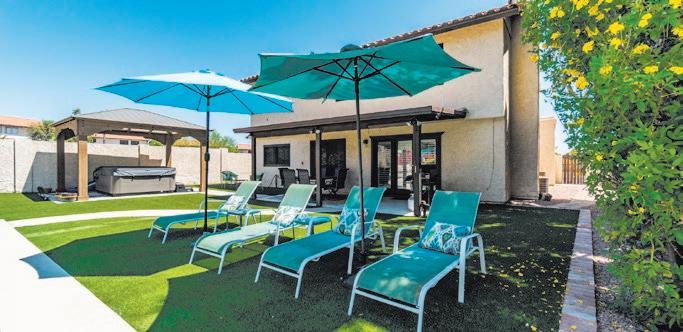

GUNS from page 15
time. But with the city refusing to back off, they raised the ante with the new complaint to Mayes, arguing that the city’s ordinances are irrelevant because they conflict with state statutes.
Mayes and Mayor Kate Gallego are both Democrats.

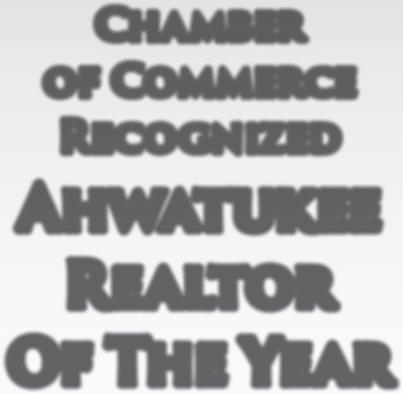




One law prohibits local governments from enacting any local dealing with “the possession, sale, transfer, purchase, acquisition or use of firearms in Arizona.’’
A separate statute says firearms shall be sold to someone who is authorized under state and federal law to receive them who must sell them to the public.
“And that money goes to the general fund,’’ said Nguyen.
Nguyen he said there may be ways for Phoenix to help Ukraine legally.
“Why not give food?’’ Nguyen asked. “Why not sell these weapons or trade them for food or whatever?’’
And he also said it has nothing to do with his views on firearms and the Second Amendment, even though he is the president of the Arizona Rifle and Pistol Association.
Gallego pointed out the city and even the state previously have transferred law enforcement items to other equivalent agencies.
She specifically cited the move last year by the state Department of Emergency and Military Affairs, under thenGov. Doug Ducey, to collect 9,000 pounds of surplus equipment from local, county, state and tribal enforcement agencies to aid Ukraine. The items shipped overseas included bullet proof vests, 77 helmets, miscellaneous tactical
CHRISTIAN from page 12
Kuiper received his B.A. in biology from Dordt College in 1982 and his M.A. in educational leadership from Northern Arizona University in 1997. As the high school principal from 1995-1999, he led a successful development campaign to raise funds for the permanent Chandler campus, which opened in 1997.
He has also managed the school’s successful NCA accreditation, has led multiple strategic planning efforts, and has twice been named as the National Track Coach of the Year.
Kuiper also is board chair for the Arizona Christian Education Coalition.
clothing, footwear, pads and shields.
“The state Legislature welcomed support for Ukraine through similar actions under former Gov. Ducey,’’ the mayor said. “And this transfer was done under the same logic and intent.’’
But Nguyen noted Ducey’s actions did not involve firearms, citing that section of law that says the rules for disposing of any other kind of property just don’t apply to firearms.
This isn’t the first time there has been a legal dispute over what cities can do with weapons.
In 2017 the Arizona Supreme Court voided a 2005 Tucson ordinance that said when the police department obtained a gun through seizure or surrender, the agency “shall dispose of such firearm by destroying the firearm.’’ The justices said it is clear it was trumped by multiple existing state laws to the contrary.
That lawsuit actually started with the same kind of complaint filed against a city that Nguyen and Bliss are using here.
In that case, Mark Brnovich who was attorney general, concluded the city was exceeding its authority. But the city, rather than rescinding the ordinance, chose to fight, resulting in the Supreme Court ruling.
Tucson lost.
“In no uncertain terms, the Arizona Legislature has declared that ‘firearms regulation is of statewide concern’ and has expressed its intent to preempt ‘firearms regulations in this state’ and thereby ‘limit the ability of any political subdivision of this state to regulate firearms,’’’ wrote Justice John Pelander for the high court.
In his message to the Valley Christian community, Kuiper praised Thelen, stating, “There is no question in my mind that Troy leads, publicly and privately, with Christ at the center. Troy seeks feedback continuously. He is willing to hear difficult news, and he is willing to deliver difficult news with love, respect, and professionalism.”
Thelen is married to a 2005 graduate of Valley Christian and the couple have three children currently attending VCS.
“There is no story of my life I can tell you that doesn’t feature, prominently, Valley Christian Schools,” he told the VCS community in a letter. “
Theodore Roosevelt, America’s gungho 26th president, could hardly summon enough superlatives in 1911 when he rode a primitive highway into the Arizona wilderness to inspect a big new dam and the lake behind it.
The highway was called, at the time, the Mesa-Roosevelt road. In later years it got the name Apache Trail in honor of the natives who pioneered the route and then had a huge hand in building the road itself.
But if Roosevelt – or anyone, for that matter – wanted to take the same whiteknuckle trip now, he couldn’t.
A long stretch has been blocked since 2019 in the aftermath of a wicked storm that piled huge boulders onto some parts of the road and washed out others.
Apache Trail advocates began lobbying the Arizona Department of Transportation almost immediately to reopen the road, but ADOT insisted from the beginning that a quick fix for what’s also known

as State Route 88 was impossible.
Now, however, a fix is at last in the works.
ADOT presented its proposal on Aug. 16 during an open house at the Apache Junction Multi-Generational Center, first outlining the scope of the problem and then a strategy for getting the road back in service.
The events that led to the shutdown began in June 2019, when the Woodbury Fire charred almost 124,000 acres of Tonto National Forest south of Roosevelt.
The denuded land couldn’t cope with the runoff from intense monsoon rains three months later.
ADOT decided it wouldn’t do much good to repair the road until the land had healed somewhat and until the road could be fortified against future flooding.
“We can’t just make quick fixes like removing the rocks, repairing guardrail and reopening SR 88,” ADOT project manager Chris LaVoie said at the Aug. 16 meeting.
see APACHE page 18


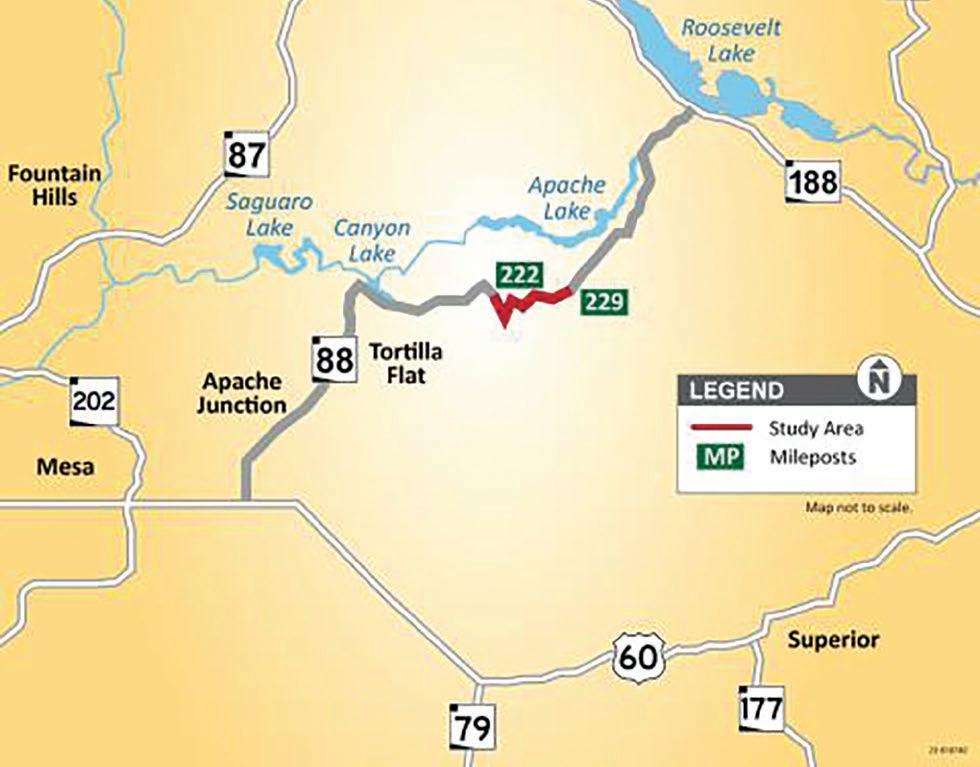









“Until we fix the underlying erosion and drainage issues, SR88 will remain vulnerable to future damage.”
In the meantime, at least, ADOT was able to work with the U.S. Forest Service, which owns the land through which the road runs, spending $18 milllion to upgrade the road from Roosevelt Lake to the Apache Lake turnoff and reopen two miles that had been closed.
From that point westward to the Fish Creek Hill overlook, however, five miles of roadway is largely impassable and, in some places, nonexistent.
Funds provided by the Legislature enabled ADOT to extensively study the original 7-mile closure area.
Jackie Noblitt, a private consultant working with ADOT, said it wouldn’t work to simply restore SR88 to its pre-2019 condition.
Even before then, she said, culverts were undersized and not able to handle heavy runoff.
But future storms, she said, are expected to produce precipitation and runoff 55 percent to 83 percent greater than what is experienced at present.
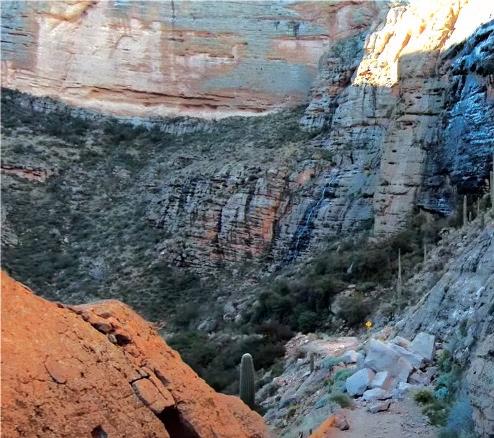
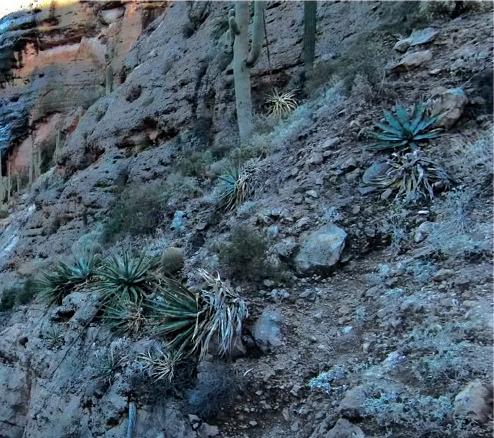
Analysts studied a range of options.
On the high end, they looked at building a 24-foot-wide asphalt-paved roadway, replacing the existing bridges and installing reinforced infrastructure along the route.
Doing that – in essence, expanding the road – would produce the highest resistance to future floods. It also would require negotiating new easements with the Forest Service.

The cheapest option would involve simply repairing the roadway, creating a concrete water barrier at Fish Creek Hill, and rehabilitating current drainage systems.
That option, Noblitt said, would result in the highest risk to future closures.
ADOT came up with what it calls a hybrid option that would produce mediumlevel resistance to future flooding.
Drainage infrastructure would be forti-
fied, existing bridges would be repaired, and the road would be surfaced with chip seal on flat stretches and asphalt on steeper parts. Some new easements would be needed.
That plan, while less costly than the Cadillac model, would still be expensive.
ADOT didn’t offer a precise estimate – which wouldn’t matter at this point because it hasn’t identified a funding source. Federal grants are one possibility.
ADOT is seeking public input through Sept. 15 as it plans the next steps. There are three venues for doing so:
• A comment form at azdot.gov/SR88apachetrail
• By e-mail at mhayes@logansimpson.com
• By phone at 480-967-1343
With enough time and money, drivers will once again be able to enjoy the vistas that so thrilled a former president more than a century ago.
The road “combines the grandeur of the Alps, the glory of the Rockies, the magnificence of the Grand Canyon, and then adds an indefinable something that none others have,” Roosevelt said. “To me it is the most awe-inspiring and sublimely beautiful.”




A proposed measure scheduled to go before City Council on Sept. 6 would allow casitas in the backyards of single-family homes, but an Ahwatukee expert in real estate law said HOAs appear to be able to block them as under the current language of the Zoning Code amendment. (City of Phoenix)
CASITAS from page 1
permitted under the City of Phoenix zoning ordinances. The short answer is ‘it depends.’”
In response to a question from the Ahwatukee Foothills News, MacQueen said, that in reviewing the proposed Zoning Code amendment, “it does not appear to contain language that would cause ADUs to be allowed if they were not also permitted by CC&Rs or deed restrictions.”
While people may assume HOA covenants, conditions, and restrictions, or CC&Rs, always trump city zoning regulations, MacQueen said that’s not necessarily the case with ADUs.
Normally, he said CC&Rs dictate “what owners can and cannot do with their property – even when a municipality, like the City of Phoenix, says otherwise,” he said, adding:
“Additionally, even when an HOA does not exist, homeowners may be bound by deed restrictions that, like CC&Rs, may restrict the ability to construct an ADU. So, in general, even if zoning laws permit the construction of a certain structure, an HOA can nix a homeowner’s plan.
“But, the ADU concept is a bit different and the ability to override CC&Rs, HOA rules, or deed restrictions is dependent on whether the City grants homeowners a “right” to construct an ADU, even when the CC&Rs prohibit them.”
MacQueen said some California cities have done just that as municipalities struggle with a housing crisis that has
gripped many parts of the country, including Maricopa County.
MacQueen said, “We can be fairly certain that the City of Phoenix could do the same thing as California if it wanted to, and should have no issue doing so.”
He also said, “There is some Arizona case law that may permit the same.”
MacQueen cited a case involving a Flagstaff couple that sued the Pine Canyon Village Association, Inc. in Flagstaff in 2012 after the HOA said they could not post a “for sale” sign on a lot.
The HOA claimed its CC&Rs forbade such signs even though the Legislature in 2009 passed a law preventing homeowners associations from forbidding them.
The Arizona Court of Appeals in 2013 upheld a Superior Court ruling that shot down the HOA ban.
“In short, if the City of Phoenix implements this ADU zoning ordinance, with language that states that ADUs cannot be prevented by CC&Rs, then CC&Rs will not likely be able to stand in the way of ADUs,” MacQueen said.
“However, if the zoning ordinance is not implemented in a way that supersedes CC&Rs, then the CC&Rs likely control the issue.
“Notably, in reviewing the most recent iteration of the zoning ordinance amendment, it does not appear to contain language that would cause ADUs to be allowed if they were not also permit-


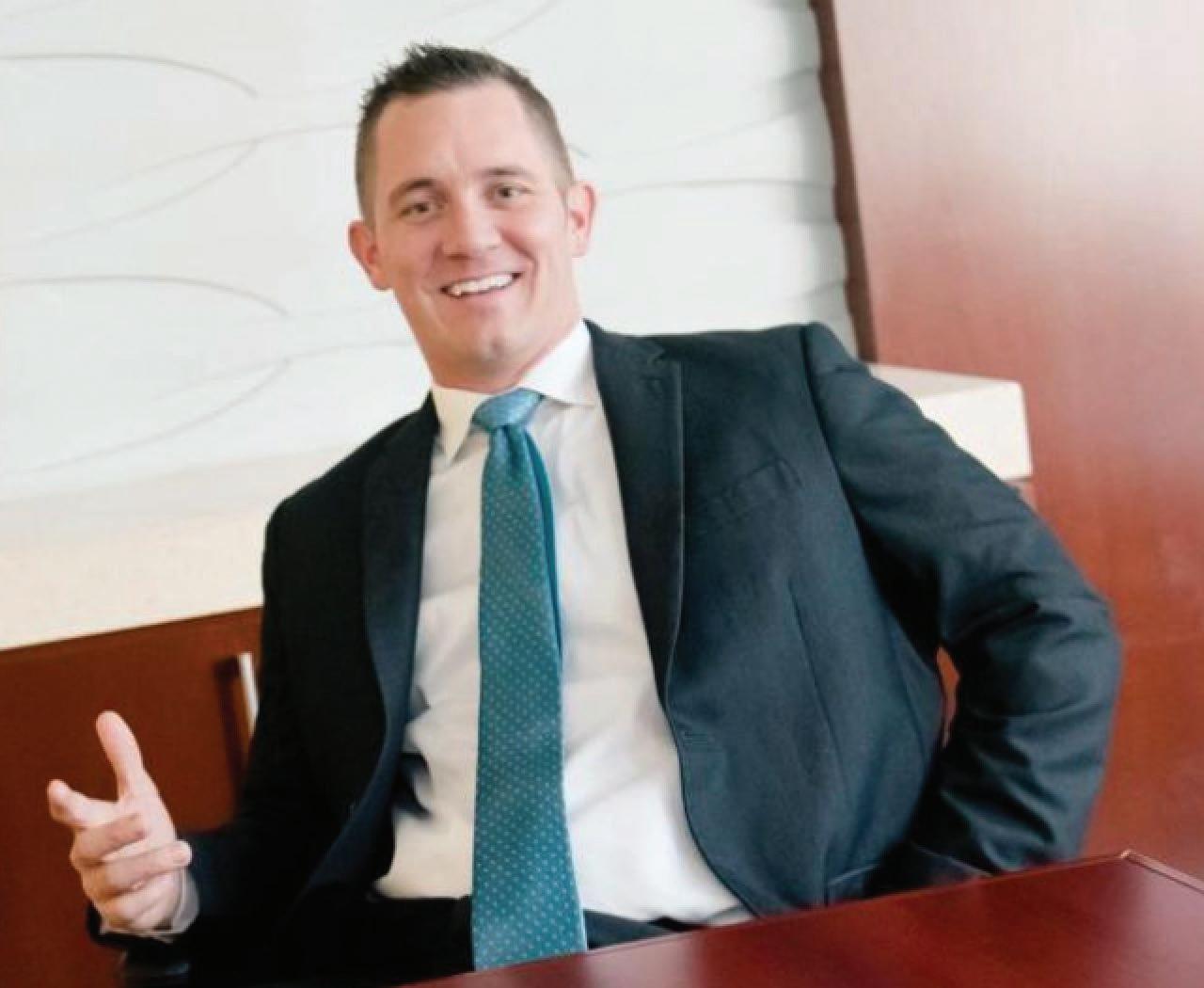
ted by CC&Rs or deed restrictions,” he added.
It’s not clear how great of an impact HOAs’ power to block ADUs would have on the goal of the Zoning Code amendment – namely create more housing in Phoenix.
The ADU measure and another Zoning Code amendment that reduces the minimum required parking spaces in apartment complexes are part of the city administration’s effort to create or save 50,000 housing units by 2030.
That goal is part of the Phoenix Housing Plan passed unanimously by the council in 2020.
Both Zoning Code amendments have generated heated debate at village planning committee meetings, including in Ahwatukee, where the panel urged the city Planning Commission to reject them.
The Ahwatukee Foothills and Desert View VPCs gave thumbs down to the ADU measure. Six of the other 13 VPCs in Phoenix approved it but urged modifications while five others okayed it as is.
Another failed to have a quorum to make a recommendation on either amendment..
The parking measure was opposed by far more VPCs. Nine of the city’s 15 pan-
els rejected it while one of the five that approved it asked for modifications.
But the Planning Commission on Aug. 3 voted to recommend Council’s approval of both amendments in their current form.
On advice from city planners, the commission declined to address concerns about homeowners using the ADUs as short-term rentals – thwarting the city’s goal of increasing the stock of affordable housing.
“I was very impressed with both your knowledge of the entire code and your ability to make all these sections work,” one commission member told city staffers. “And overall, I think you guys have just done a fabulous job.”
During VPC meetings and the Planning Commission hearing, suggestions had been made to include a 30-day minimum rental period for ADUs.
Concerns also were expressed about the impact of ADUs on neighborhood street parking spaces as opponents of the measure in its current form questioned the adequacy of parking requirements on the homeowner’s lot.
The ADU amendment would allow homeowners to build a casita up to 75% of the size of the main house on a lot.
CASITAS from page 19 see CASITAS page 21
The ASU Chandler Innovation Center was first announced during the mayor’s State of the City speech in 2012. It took a while, but the ribbon cutting on the latest version of that center was Aug. 23.
It’s an improvement over a building that sat mostly empty during the COVID-19 pandemic.
“I started here in 2018, part of the
CASITAS from page 20
The commission also saw no need to address concerns about ADUs in historic neighborhoods or address concerns that there was no additional parking requirement for them.
To a large extent, city staff told the commission, any problematic issues would be resolved during the site review process for an ADU.
Staff also dismissed demands by some
Chandler Innovation Incubator Program,” said Jack Liu, the founder and chief executive officer of ProCARE Portal. He was one of the entrepreneurs asked to cut the ribbon. “That’s exactly how I would describe it, a rebirth. It feels like a renewed energy coming out of the pandemic.”
The ASU Chandler Innovation Center is a partnership between the university and the City of Chandler. It is part of the J. Orin Edson Entrepreneurship + Inno-
that additional parking should be required at a single-family home site with an ADU because otherwise casita tenants would be parking in front of neighbors’ homes.
“Our thought is that parking has been provided with already existing driveways for the ADU,” a city staffer told the commission.
“Currently, every single-family home has to have two required parking
vation Institute (ENI Institute). There is no charge to entrepreneurs who use the space.
Liu’s company is one of the success stories of the early versions of the Innovation Center. He said they only took one round of initial funding and were able to start making profits soon after that.
ProCARE Portal is a software as a service company that focuses on incentive compensation and performance management in the medical industry.
spaces…So if you have a two-car garage and we have a 20-foot (driveway) you actually have roughly four spaces there tandem.”
He added that similar concerns had been raised in Tucson when that city created an ADU addition to its Zoning Code and that “people couldn’t figure out where to put” any required additional parking “so we have not proposed any additional parking requirements.”

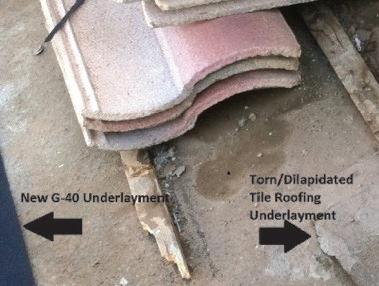
Now, he’s able to help others learn from his journey to success.
“I love nothing more than to help a fellow entrepreneur get their idea off paper and into action,” Liu said.
The Innovation Center provides a work space for people who have an idea and who want to turn it into a business or service. The more valuable asset it offers, is a chance to work with other en-
see ASU page 23
The ADU measure drew strong support at the Planning Commission hearing from citizens who addressed the panel. Ten of the 12 speakers urged its approval.
Proponents said the measure would increase affordable housing in Phoenix despite the fact that officials have not defined what constitutes “affordable” homes.
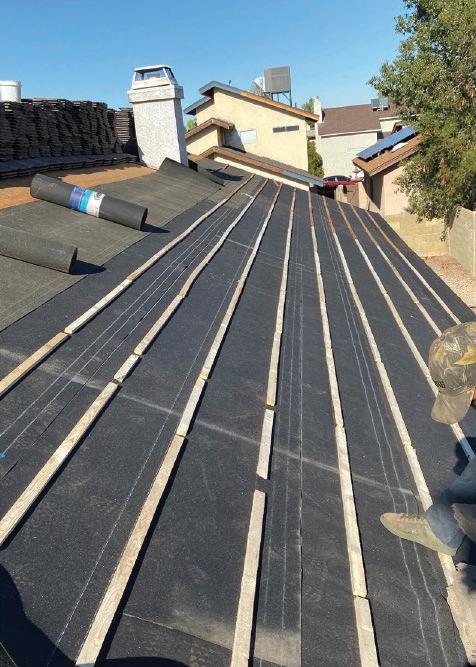
South Chandler residents Gene and Taryn Lower said they did everything they could to save their 16-year-old son Ryder.
“That’s the hardest thing,” Gene said. “We don’t blame ourselves or each other. We do know that we tried everything.”
Ryder, a junior at Arizona College Prep High School, died by suicide on Aug. 11. It is the second straight year that a Chandler Unified School District student died by suicide in the opening weeks of a new school year.
Taryn and Gene said they have sought help for their son for two years, seeing different doctors and reaching out for help. They also helped Ryder change schools.
Ryder was an excellent athlete, his parents said. Any sport he tried, he was instantly good at. He settled on lacrosse as his favorite and was starting to earn interest by college recruiters.
His parents said Ryder, who had good grades, was interested in attending college in the eastern United States, where most of the top college lacrosse programs are.
Ryder also had no problem speaking before big crowds. He was diagnosed with type 1 diabetes when he was 8, and soon after became an ambassador for a diabetes support group, speaking to scores of people at a time about living with the disease.
“I remember I gave him a shot in the hospital, and I mean I just jammed that needle in, thinking that’s what you’re supposed to do,” Taryn said. “I had no idea.
“At 8 years old, he was like, ‘Mom, that’s it! You don’t get to do this anymore. He came out of the hospital … and started giving himself insulin and never let anybody else do it.”
The trouble for Ryder started after he entered high school but eventually the Lowers had to admit their son to inpatient care.
Once that ended, he had intensive outpatient care that were about three hours for four days a week.
At home, no topic was off the table.
Gene and Taryn said they spoke to
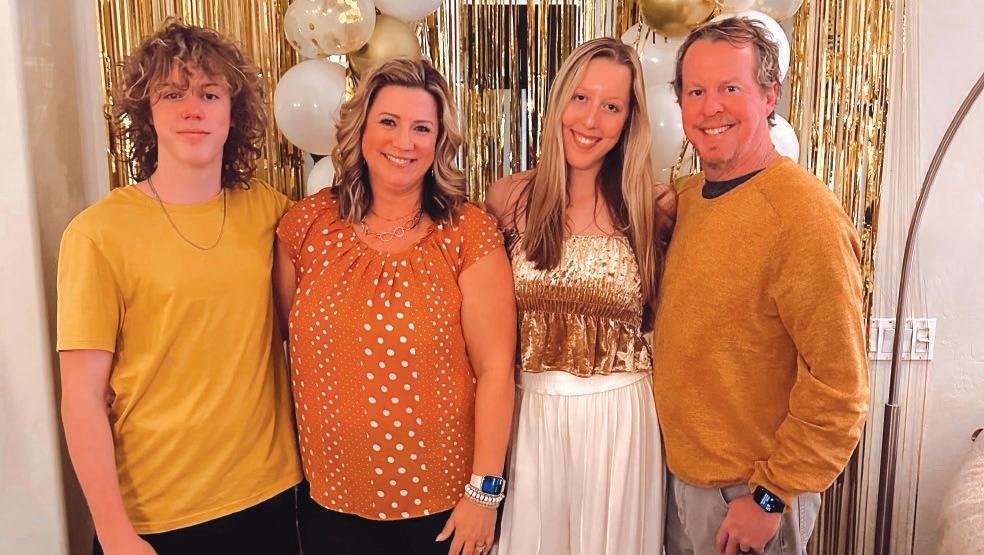
their son about suicide and let him know he could tell them anything.
The Centers for Disease Control and Prevention reports that suicide is the second highest cause of death for people 10-to-24 years of age.
Statistics are only available through 2021, when it reached a high of 10.7 suicides per 100,000 people in that age group. It was at 7.8 per 100,000 in 2001.
That same upward trend in the same age group has been reported for Arizona by the state Department of Health Services.
To address the mental and emotional challenges that often can lead a teenager to contemplate suicide, the Chandler Unified School District will hold a ribbon cutting for the Hope Institute at 6:30 p.m. Wednesday, Aug. 30, on the campus of Perry High School.
The Ohio-based center is expanding and this is its first joint venture with a school district in the United States.
The Hope Institute is a short-term care facility. Its goal is to get students in need in quickly and address their needs in the short-term. The institute will work with a student for no longer than six weeks.
Once the student’s short-term needs are met, then CUSD plans to help families get care through longer term agencies, such as Southwest Behavioral Health or Lighthouse Wellness.
The Hope Institute will be available to all CUSD students and the district will help families obtain state funds to pay for treatment.
afraid to speak up.’”
Taryn said Ryder did not have a wide circle of friends and they are certainly not blaming them, saying his best friend is hurting right now.
But in general, they feel teens spend too much time on their phones and it’s too easy to escape to the virtual world when they might encounter something awkward or difficult in the real world.
They want those teens to feel safe coming forward and say, ‘Your son’s not doing well right now. He’s going through a bad breakup.’
Perhaps the best way to deal with this rise in teen suicides is to make sure all teens feel safe coming forward when they see an issue, the Lowers said.
Brenda Vargas, the district’s director of counseling and social services, told the CUSD Governing Board that 395 district students had considered suicide between July 2022 and January 2023.
That came after three students took their lives in May 2022 and another one followed soon after the last school year started.
The district hopes The Hope Institute will turn that tide.
The Lower family said they want some good to come from their son’s death.
First, at least 30 people benefited in some way from his organs and tissues.
The family also wants to raise awareness about the rise in teen suicide and has an idea on where to start that emerged as Taryn thought: “I wish those that are close to him, or whomever, friends, girlfriends, whoever, maybe would sometimes have the courage to say something. And that is what we are missing.”
“I think you kind of gave me a light bulb,” Gene said, speaking generally about what families might consider.
“Maybe the suggestion is not for parents to sit down with their kids and discuss it, but to sit down with a group of parents and say, ‘You’re with your kid, your best friend’s, close friend, you have a group of people together and maybe make a pact between the parents with the kids, saying, ‘if you see something here, something, anything, don’t be
Gene and Taryn are trying to recover. They recently dropped their daughter, Skye, off in Florida to start college.
“We’re trying to make life as normal for her for her new start,” Gene said.
Recovery will take time. The family’s dog, Rocky, would wait by the door at night for Ryder to come home, usually from lacrosse practice.
“I’ve been noticing, my wife goes to bed before me, I’ll go to bed and he will just lay right where he is now waiting for him.”

trepreneurs who have the same goal.
“You come in, say hi to somebody, and they'll sit down with you, talk to you, and see how they can help,” said Caitlin Penny, founder of Copper Theory Creative, a branding company.
Tracey Dodenhoff is vice president for entrepreneurship and innovation at Arizona State University.
“There’s no application for this,” Dodenhoff said. “Everyone who’s solving a problem using innovation is welcome. That can be somebody trying to come up with a new pizza formula, it could be somebody trying to solve some sort of genetically-driven disease. There’s a whole range of things that can be looked at.”
It wasn’t easy getting to the ribbon cutting. Councilmember Christine Ellis said it’s something they have been pushing to get done for years. Councilmember Mark Stewart said it has been a priority for him, and the rest of the council to get to that day.
“We're excited to make this ASU Chandler Innovation Center a true commu-
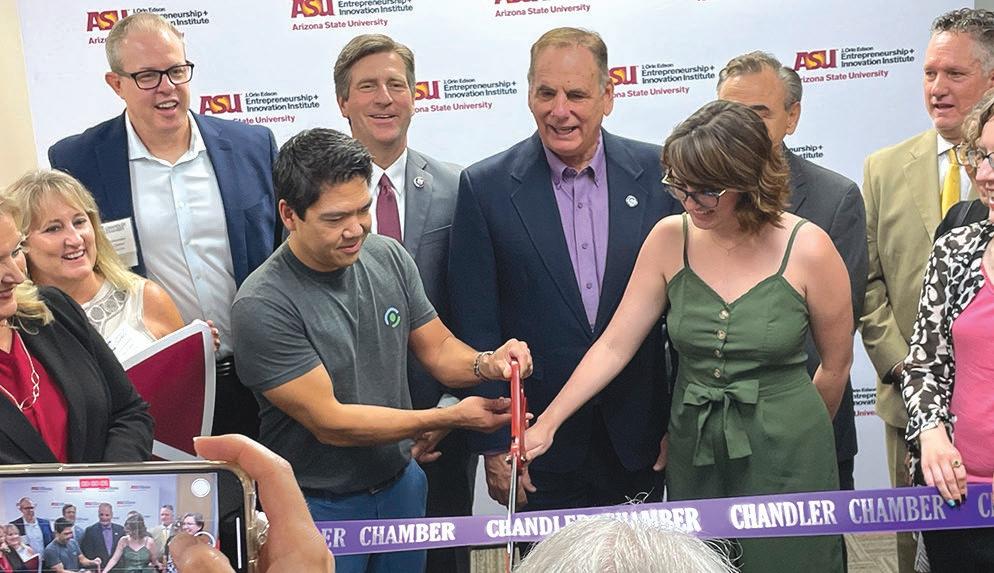
nity resource for Chandler and beyond,” Mayor Kevin Hartke said during his remarks. “And within ACIC local entrepreneurs, and innovators will have access to the resources that they need to start to grow their business.”
Congressman Greg Stanton also attended and made remarks.
“We need innovators,” Stanton said.

“We need the people that are going to use this facility to help prepare ourselves for issues of tomorrow. We're facing big challenges locally and nationally. And we need big solutions creating a conducive environment to foster innovation.”
One of the entrepreneurs asked to cut the ribbon said the networking is definitely important, but she said don’t dis-
count having a work space available.
“I have classmates who don’t have internet at home,” said Hope Anderson, founder of Lesson Magic. “They have to come to campus or to a co-working space to be able to access some of the platforms … without using the data on their phones. That’s a really helpful place to be able to do that in the community.”
The Innovation Center was first part of ASU’s College of Technology and Innovation. It has had management changes and then struggled during the pandemic.
“I was probably the first, or maybe second, cohort that started here,” Liu said. “We went through a transition period, obviously. We took up office space here by quarter four of 2022.
“The incubator was going through a transition period where the old management company was on its way out, and we were kind of in limbo for the last nine months while the city and ASU were trying to figure it out.”
He said he’s very happy with the result.
“I thought it made all the sense in the world for the ENI Institute at ASU to take it over. That’s right in their wheelhouse.”

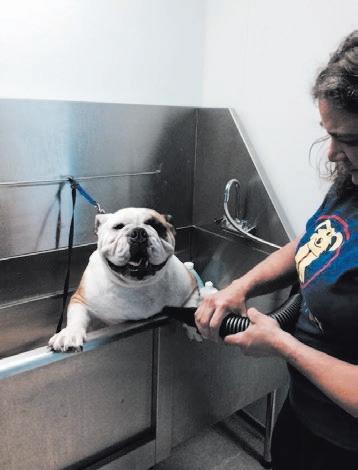








The way Melody Hernandez sees it, the trauma incurred by those taking emergency calls from people in crisis and dispatching help is no less than what occurs for her as a paramedic.
But state law did not require that 911 dispatchers get access to the same counseling.
Unlike others in her field, she could actually do something about it as a state representative. So the first-term Phoenix Democrat got colleagues this session to unanimously approve legislation that extends the program now available to other public safety employees, peace officers and firefighters to get paid coun-
seling after a traumatic event.
In a signing ceremony Aug. 23, Gov. Katie Hobbs, herself a former social worker, emphasized the importance of the new law.
Current law requires public employers to establish programs for counseling of public safety employees after certain circumstances.
That includes visually witnessing the death or maiming of an individual, being involved in investigating certain crimes against children or requiring rescue where their life was in danger.
HB 2717 first adds the term “audibly’’ to witnessing. And then it specifically in-
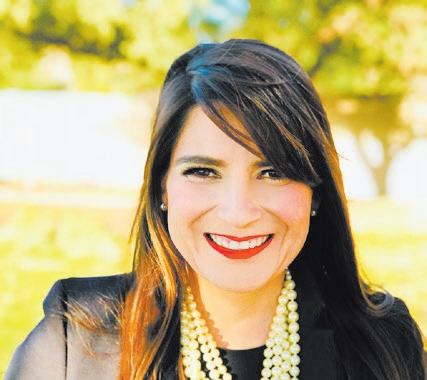

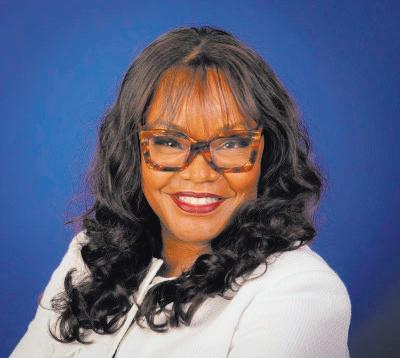
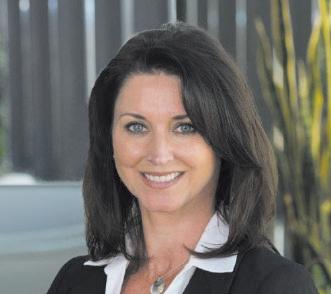


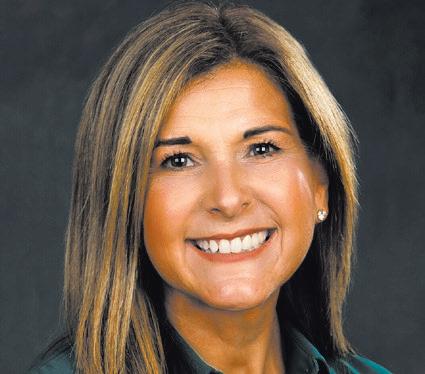
1520 SOUTH LONGMORE, MESA
From city hall and the statehouse (and Senate) to corporate offices and boardrooms, women are making a remarkable difference in our community.
From
From city hall and the statehouse (and Senate) to corporate offices and boardrooms, women are making a remarkable difference in our community.
and
On September 20, join us as we recognize women leaders at the PHX East Valley Partnership’s annual Statespersons’ Event.
On September 20, join us as we recognize women leaders at the PHX East Valley Partnership’s annual Statespersons’ Event.



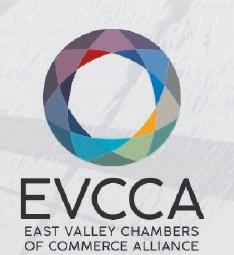


Keynote Speaker
Keynote Speaker
Keynote Speaker

Anna Maria Chávez, president and CEO of the Arizona Community Foundation and one of the world’s top experts on women’s leadership
Anna Maria Chávez, president
world’s top experts
Panel
Anna Maria Chávez, president and CEO of the Arizona Community Foundation and one of the world’s top experts on women’s leadership
Panel Discussion: Propelling More Women into Leadership Roles
Moderator: Stacy Derstine, APS
Panel Discussion: Propelling More Women into Leadership Roles
Moderator: Stacy Derstine, APS
Panelists:
Panelists:
1520 SOUTH
Moderator: Stacy Derstine, APS
Panelists:
• Toni Broberg, state president, Arizona and New Mexico, AT&T
• Toni Broberg, state president, Arizona and New Mexico, AT&T
• Jenn Daniels, CEO, Horizon Strategies
• Toni Broberg, state president, Arizona and New Mexico, AT&T
• Jenn Daniels, CEO, Horizon Strategies
• Rosa Inchausti, city manager, City of Tempe
• Jenn Daniels, CEO, Horizon Strategies
From city hall and the statehouse (and Senate) to corporate offices and boardrooms, women are making a remarkable difference in our community.
• Rosa Inchausti, city manager, City of Tempe
• Dr. Tammy Robinson, president, Mesa Community College
• Rosa Inchausti, city manager, City of Tempe
• Dr. Tammy Robinson, president, Mesa Community College
• Sarah Watts, president/CEO, Gilbert Chamber of Commerce
On September 20, join us as we recognize women leaders at the PHX East Valley Partnership’s annual Statespersons’ Event.
• Sarah Watts, president/CEO, Gilbert Chamber of Commerce
• Dr. Tammy Robinson, president, Mesa Community College
Keynote Speaker
RSVP
RSVP
RSVP

• Sarah Watts, president/CEO, Gilbert Chamber of Commerce

Anna Maria Chávez, president and CEO of the Arizona Community Foundation and one of the world’s top experts on women’s leadership
Ticket packages of 10 are $1,000 and individual tickets are $100. For more information, visit www.phxeastvalley.com or contact Jessica Hubbard at 480-532-0641 or jhubbard@phxeastvalley.com.
Ticket packages of 10 are $1,000 and individual tickets are $100. For more information, visit www.phxeastvalley.com or contact Jessica Hubbard at 480-532-0641 or jhubbard@phxeastvalley.com.

Panel Discussion: Propelling More Women into Leadership Roles
Ticket packages of 10 are $1,000 and individual tickets are $100. For more information, visit www.phxeastvalley.com or contact Jessica Hubbard at 480-532-0641 or jhubbard@phxeastvalley.com.
Moderator: Stacy Derstine, APS
Panelists:
• Toni Broberg, state president, Arizona and New Mexico, AT&T
• Jenn Daniels, CEO, Horizon Strategies
• Rosa Inchausti, city manager, City of Tempe
• Dr. Tammy Robinson, president, Mesa Community College

• Sarah Watts, president/CEO, Gilbert Chamber of Commerce
RSVP
Ticket packages of 10 are $1,000 and individual tickets are $100. For more information, visit www.phxeastvalley.com or contact Jessica Hubbard at 480-532-0641 or jhubbard@phxeastvalley.com.




cludes 911 dispatchers.
During hearings on the bill, 911 dispatcher Lauren Birnbaum tried to explain to lawmakers about the stresses.
“I cried on the phone with a mother while she did CPR on her 6-year-old son after finding him in the pool,’’ she said. “I couldn’t finish the call without tears.’’
That, Birnbaum said, would have been a normal response for anyone else. But she said dispatchers are not encouraged to find a counselor, even one they have to pay for themselves.
“We are told to cry in the bathroom –but not too long and come back in for more, quickly,’’ Birnbaum said.
Hernandez echoed that at the bill signing, stating, “911 dispatchers are truly the first responders.
“They’re the one who answer the calls to begin with,’’ Hernandez said. “And af-
ter they’ve worked through the screaming and the anxiety and the pressure that they face from the community that they are speaking to, they are oftentimes, once they leave the call, they are left with the pain of those calls, they are left with the memory of those calls.’’
Hobbs said the role of these dispatchers is critical.
“Many of these calls can be the difference between life and death for the caller,’’ she said.
“Those on the receiving end are tasked with putting their emotions aside and acting decisively to get help where it’s needed,’’ the governor continued.
“And the moments they are on that phone can be extremely traumatic experiences that they take home with them.’’
But with no coverage from employers, she said, the dispatchers either have to pick up the cost of their own counsel-
ing “or continue working under serious emotional strain.’’
Hobbs said this is more than about getting care for dispatchers. She said there are multiple reports of a shortage of dispatchers across the state.
“Ensuring dispatchers get the care they need will help us fill gaps in our workforce,’’ the governor said. “We must give them the tools they need to thrive outside the workplace as well.’’
Hernandez said the symptoms of what is post-traumatic stress disorder are serious.
“It is one of the most difficult diseases to deal with,’’ she said.
“You have multiple, recurring nightmares about situations you have heard on the phone or you have witnessed firsthand,’’ Hernandez continued. “And those recurring nightmares can oftentimes wake you up in fear and panic.’’
Hernandez said it also can result in people getting angry about things that are out of their control.
“A sight, a sound, a small thing can trigger that memory and leave you stuck in the past,’’ she said.
Hernandez said she has suffered “flashbacks.’’
“I get so stuck in the past that, while I know that I’m here, I’m also completely re-imagining or re-visualizing what traumatized me to begin with,’’ she said.
As it turns out, though, Hernandez does not have the same paid counseling already available for paramedics who work directly for cities.
She is an employee of American Medical Response, a private firm which works with a variety of cities. And that means any costs of treatment comes out of her own pocket.












Brian Lensink’s avocation is reaping national recognition and awards.
The Ahwatukee man honed it during a successful 35-year career in disability services leading to his becoming state director of developmental disability services in Arizona and other states.
His love of art began at an early age influenced him when he chose his major in industrial arts education at the University of Minnesota, where he graduated.
Through that major, he focused on graphic arts, metal working, woodworking and photography.
But his minor in special education with a specialty in developmental disabilities led to a decades-long career following the completion of his master’s degree in educational administration at the University of Nebraska.
“I was faced with the real life decision of making a living,” Lensink said with a smile.
“Ultimately, I worked to become the state director of developmental disability services in Arizona, Colorado and Connecticut – where groundbreaking work was done to transform how services were provided to people with disabilities and their families.”
“And yet the ability to work with my hands and with tools continued to be a major interest throughout those years, and has brought me great satisfaction.”
Metalwork was his original passion as an artistic outlet, and a serendipitous 1978 visit to an Alexander Calder exhibition in Omaha captured his imagination.
From that point, metal mobiles and stabiles became the focus of his artwork.
“Like most artists/sculptors who create mobiles, I’ve been tremendously
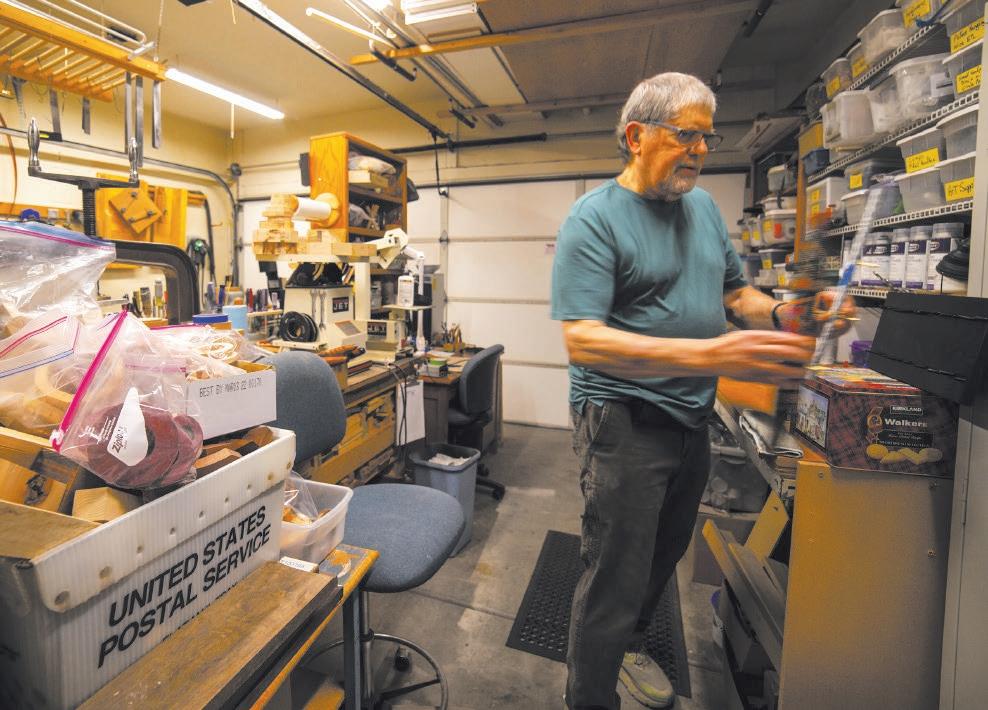
It’s not easy raising babies.
And it’s even harder when you can’t afford even the basic items like diapers and onesies that other parents never worry about.
That’s why Ahwatukee Kiwanis Treasurer Andi Pettyjohn is once again organizing the club’s annual baby shower to benefit teen single moms, single dads and couples.
The invitation-only shower later this month – held at a secret location to protect the parents, especially the moms –is mainly for parenting foster teens, students in the Tempe Union High School District Teen Parenting Program and “other moms and dads in crisis,” Pettyjohn said.
“We feel that by offering support and help to these young parents and their
children, we’re helping them beat the odds in becoming just another statistic,” Pettyjohn has said in the past to explain the rationale for the shower.
Pettyjohn and other Kiwanians have distributed boxes for item donations and the club also is soliciting funds on its website for the event, a festive afternoon with gifts that the guests of honor will be treated to gifts and a celebration no different from any other baby shower.
“I don’t have my numbers in yet for attendees,” Pettyjohn said. “But I’m anticipating about 75-100 young moms and dads – about the same as last year.”
While special needs are backpack diaper bags, toddler bibs, and toddler clothing in sizes 18-months to 4T, the club would also welcome new and gently
used cribs, strollers, clothing for infants and toddlers, shoes, baby blankets, diapers, toys and gift cards.
Donation boxes are at:
• Ahwatukee Swim & Tennis, 4700 E. Warner Road;
• PostNet, 4611 E. Chandler Blvd., #112;
• Mountain View Lutheran, 11002 S. 48th Street;
• Ahwatukee Carpets, 15215 S. 48th Street, #185
• Horizon Honors High School, 16233 S. 48th Street
Deadline for collections is Sept. 25.
Monetary donations can be made on our website ahwatukeekiwanis.org or by mail at P.O. Box 50596, Phx, AZ 85076
Pettyjohn said the club also needs volunteers for set up on Sept. 29. They can
contact info@ahwatukeekiwanis.org for more information.
In years past, donations have included wooden rocking horses and other new toys for infants and toddlers, as well as newly-purchased clothing and blankets – donated by some anonymously given and some who have memories to share.
Pettyjohn recalled a memorable connection that followed the Kiwanis’ inaugural Community Baby Shower,
“I got a phone call from an older gentleman who said, ‘God bless you for what you are doing for these young moms. My mother was a baby when she had me and we didn’t have anything but love when I was growing up. She could have used someone like you to help her then.’ I’ll never forget that call,” said Pettyjohn.
The Armer Foundation for Kids will host its fourth annual “Shine Your Light Gala,” 5-10 p.m. Sept. 23 at The Sheraton Grand at Wild Horse Pass, 5594 W. Wild Horse Pass Blvd. Proceeds will benefit local families whose children have chronic or life-altering diseases that lead to major financial barriers for treatment.
The evening will feature cocktails and hors d’oeuvres, a three-course plated dinner, inspirational speeches and local families whose lives have been changed by the help of the Armer Foundation, along with a silent auction, live music by Nineball and dancing.
“This is our biggest fundraiser of the year and it’s an inspirational evening where we hear from the families we have helped and can see the impact we make through annual fundraising efforts such as this,” said Jennifer Armer, co-founder of The Armer Foundation for Kids.
“It’s our mission to ensure that no child should see their family (financial-
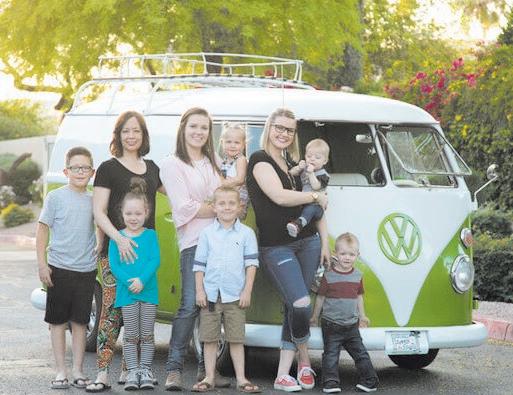

ly) stressed due to a medical condition and the resulting treatment that could potentially provide them a chance at a normal life.”
Armer said when health insurance is not enough, the foundation helps by assisting families with co-pays, premiums, deductibles, and out-of-pocket expenses.
Tickets are $125 and can be purchased at armerfoundation.org, 480-257-3254 or at the Armer Foundation for Kids Thrift Shop, 9830 S. 51st Street, Suite A128, Ahwatukee.
Time is growing short to get tickets for the Kyrene Foundation’s Night for Kyrene gala, which raises funds for the foundation’s mission of helping the entire school district’s community.
It will be held 6-10 p.m. Sept. 9 at Wild Horse Pass and include a plated dinner, cash bar, a wine pull, music by Picaso & Twin Strings and a silent auction that will also be available online.
Tickets and information on sponsor ben-
efits is at e.givesmart.com/events/wTu.
The foundation also is putting out the call for silent auction items, saying it welcomes gift cards and baskets, services, memorabilia, staycation packages and more.
Donors can contact nightforkyrene@ kyrenefoundation.org.
Corpus Christi Knights of Columbus ramping up for golf tourney
Confident the heat wave will ebb by September, the Corpus Christi Knights of Columbus Council 10062 is asking golfers to save Sept. 9 for their annual Memorial Golf Tournament.
This year’s tournament honoree is Jim McGrath and this is Knights’ 32nd event.
Proceeds will benefit Knights’ Charities, the K of C Ukraine Solidarity Fund and Folds of Honor Arizona, a nonprofit providing scholarships to qualifying family members of fallen military and first responders.
Registration is taking place now and includes a full round of golf, beverages,
cart prizes and lunch for $140 per player.
The tourney will be at the Arizona Grand Golf Course in Ahwatukee with a 7:30 a.m. shotgun start.
Knights of Columbus 10062 Charities, Inc. is a 501(c) (3) organization. Call 480250-2208 and leave a call-back number or visit kofc10062.org to download registration and sponsorship forms.
Ahwatukee American Legion to hold meeting, special social American Legion Post 64 meets monthly at the Ahwatukee Recreation Center, 5001 E. Cheyenne Drive, and has two events planned this September.
At 4 p.m. Sept. 20, a membership meeting will include a discussion of the post’s refocused mission.
A fun Veterans Social Mixer will be held at 5 p.m. Sept. 27 at the ARC will feature music, card playing, and light refreshments. Both events are free and open to the public.
The Legion will also be distributing
see AROUND page 31
If




thought you have been to a Mexican restaurant lately you probably need to reconsider and visit La Casa De Juana in Ahwatukee. The fare is authentic Mexican, and when we say authentic we mean it, unlike many of the restaurant chains that call themselves Mexican. Upon entering you’ll be dazzled by the colorful décor, the tables and chairs are beautiful, Mexican painted murals, colorful banners hanging from the ceiling and the gracious service with warm orange and yellow tones echoing throughout the restaurant will make this

Mexican restaurant. With great lunch and dinner specials,
Hour
- Sunday from 2 - 6
have
with $5 House Margaritas, $4 Beers, $5.95 Cheese Quesadilla, $8.95 Chunky Guacamole and $9.95 Juana’s Nachos. Live music every Thursday night in our Ahwatukee location and every Friday at our Tempe location. In conclusion The flavorful salsa, the delicious margaritas, the extraordinary and well-priced food will definitely keep you coming back.









inspired and informed by the work of Alexander Calder, the great American artist who invented and popularized the mobile as fine art,” explained Lensink.
“I’ve traveled to see as much of his work as possible, and I’ve gathered an extensive collection of solo and group exhibition catalogues, books, monographs and magazine articles pertaining to Calder.” His collection now numbers more than 600 items.
“I was absolutely captivated by Calder’s work and his ingenious designs, whimsical imagination, and creative use of materials. That captivation has never subsided whether the medium is metal, or as now, wood.”
Unlike his Lensink’s work, Calder’s mobiles and stabiles rarely included wood.
Wood became Lensink’s main medium in 2012.
What led to his work being displayed nationwide in galleries, commercial offices and private collections, began serendipitously after a pickleball game at the Ahwatukee Recreational Center.
“I’d just finished playing when a friend suggested I take a look at the ARC woodshop. I went back and gave the lathe a try for a while, and I just fell in love with working with wood,” he recalled.
“From there I started watching YouTube videos and began collecting my own woodworking materials and tools.”
He also joined the Arizona Woodturners Association, where he was president until last May.
Since putting his hand and interest into woodturning, his three-car garage


The piece is made of maple and is 14” tall and 10” in diameter. The segmented vessel was assembled, turned, beaded and painted. This particular vessel was a commission piece. (Courtesy of Brian Lensink)
at the Ahwatukee home he and his wife Barbara Brent purchased in 2001, is chockablock with wood, woodburning pens, hand tools, lathes, saws, routers, sanders and other machinery.
His website, lensinkcreations.com, offers a glimpse into the prolific, varied, and award-winning creations he has fashioned from wood – and then skillfully photographed.
Among them the more fascinating, and costly, are his basket/pottery illusion pieces.
“I create an original design for every piece. This is done using graph paper or Adobe Illustrator. It involves a lot of trial and error work and changing of colors to get the best design.
It’s often not thought about as part of the process, but of course it is critical to the final piece,” explained Lensink.
“The basket illusion pieces are very time-consuming. Regular turning, using one species of wood, can usually be completed in the least time. Segmented pieces take more time due to the cutting of the segments and gluing that is needed,” he said.
“With basket illusion pieces you have to build the vessel using segmented techniques and then bead the surface, wood burn the squares and then paint the piece with India Ink to develop the pattern,” Lensink explained.
“There can be as many as 10,000 little squares that each need to be painted,” added Lensink, whose latest basket illusion is 12” tall and 11” in diameter with approximately 19,400 little squares.
Painting the tiny squares and rectangles requires intense focus.
“When painting a piece, you have to stay alert so you don’t make mistakes and paint the wrong squares. The burning of lines to create the squares is the most tedious and sometimes monotonous part, but it’s critical to creating this type of piece.
“It also takes as much, or sometimes even more time, than the painting of the piece.”
He said when art aficionados view his artworks at area art shows or galleries like the Faust Gallery in Scottsdale and Santa Fe, they often express their amazement at the patience each piece requires.
“Yes, people always suggest that I must have a lot of patience, yet I don’t feel like a patient person and I think the better word is persistent,” he confessed.
“I work about six hours a day on my art and sometimes I do it in the evening as well. It’s helpful that my studio is in the garage so I can pop out there any time to glue an additional ring or put on an additional coat of finish.
That also needs to be counted as time toward the piece, but it is hard to calculate.”
The hours spent in his studio are rewarding, he said, whether it be a segmented vase with turquoise inlay, a basket pottery illusion drawing on Native American designs, a large salad bowl crafted from one block of wood, or the pepper/salt grinders and shakers that grace collectors’ tables nationwide.
“I enjoy the work and it provides an outlet for my creativity so I don’t really spend much time calculating the actual hours I spend doing it. That is why answering peoples’ questions is so difficult.
One other factor that makes time estimation difficult is that I usually have several pieces in the works at any one time.”
The close-up India ink painting of his segmented vases or stabiles is in itself labor-intensive.
“Working close to home allows me to do some of the work at the kitchen table or while sitting in a comfortable chair. All I need is lots of light.”
Lensink said he prefers to work with tight-grained and dense hardwoods, exotic woods like ebony, rosewoods, curly maple, canary wood, wenge, purpleheart and holly.
He also sources local woods like mesquite, sumac, acacia, ash, ironwood and sissoo.
“If there’s a microburst, I’ll be there to

At 8” tall and 7” in diameter, this is a regular wood turning from an Acacia tree that came down locally. “When you start from a log you never know exactly what you are going to get at the end. This log had been sitting in my shed for a couple of years. It was very dry and had a lot of bark inclusion. Some of the old dry bark fell off while turning to reveal some interesting features,” Brian Lensink said. (Courtesy of Brian Lensink.)
cut off a few branches,” laughed Lensink. “The HOA cut down a couple of ash trees nearby and I was right there. I like putting a chunk of wood on the lathe to use for the large salad bowls I’ve made.”
He credits his grandmother and mother for helping instill the love of creativity early in his life; teaching him to sew, knit and weave baskets.
“My grandmother sewed the clothing for her three children and was a basket weaver later in life. My mother was a home economics teacher and taught me to sew and knit when I was young,” said Lensink.
“I think those skills led to my current interest in wood art.”
Lensink continues to consult in the fields of developmental disabilities and behavior health.
Retirement isn’t the right word to be used when describing Lensink.
“I still do some work in the field … working on behalf of people with developmental disabilities and children with behavioral health challenges and their families,” he said.
“I am extremely lucky in that I have two wonderful areas of interest and expertise that keep me extremely busy and keep the creative juices flowing.
To view some of Lensink’s art, and for more information on commissions, see his website at lensinkcreations.com
He also sells his woodturning art on Etsy.
AROUND from page 28
free infrared thermometers and N-95 masks at these events.
Information: Brenda at 303-301-4429.
An engraved commemorative paver placed at the Ahwatukee Blue Star Memorial can be requested to honor a friend or family member who served, or is currently serving, in the U.S. Military. Orders are being accepted until Oct. 1 for placement by Veterans Day.
Pavers cost $60 with the military logo of choice, or $50 without a military logo. Pick up order forms at the Ahwatukee Board of Management, 4700 E. Warner Road or at ahwatukeehoa.com/bluestar-memorial.html.
Leave completed forms and payment at the ABM office by Oct. 1.
Information: annemariehancock@ahwatukeehoa.com.
The Blue Star Memorial, a joint project of the Desert Pointe Garden Club and the Ahwatukee Board of Management, is on the north side of Warner Road just west of 48th Street. Parking is available
in the ABM parking lot.
Dance Studio 111 kicks off its 30th year in business in Ahwatukee next Tuesday, Sept. 5.
Under the guidance of founder Kimberly Lewis, the staff teaches ballet, Jazz, hip hop, lyrical, contemporary, tap, musical theater, Latin fusion, stretch and conditioning, turns and technique and pointe in classes for ages 2 through adult.
Classes include first time beginning dancer, intermediate and advance level.
Dance Studio 111 just completed a renovation of its lobby and is offering a free week of trial classes Sept. 6-10.
“As a thank you to our community we have lowered our prices,” Lewis added.
Information: 480-706-6040 or dancestudio111.com. To sign up for a free trial week of classes, email: dancestudio111@ dancestudio111.com.
The Kiwanis Club of Ahwatukee has
lined up some speakers for its 7:30 a.m. meetings every Thursday at Biscuits Restaurant in the Safeway strip mall on the southwest corner of Elliot Road and 48th Street.
Speakers are: Sept. 14, state Sen. Mitzi Epstein; Sept. 21, a representative from Goldfish Swim in Ahwatukee; Oct 12, state Rep. Stacey Travers; Nov. 16, Patrick McWhortor of the Arizona Citizens for the Arts.
Free community nights have been slated the third Friday of every month throughout the school year at Kyrene del Pueblo Middle School, 360 S. Twelve Oaks Blvd., Chandler, through a partnership between the school district and City of Chandler.
Events begin Sept. 15 and the only time a program will not be held will be in March.
Interactive programming for children and adults includes arts and crafts, yard games, open gym and more.
Themes include: Sept. 15, Fiesta Friday; Oct. 20, Autumn Extravaganza; Nov.
17, S’more Fun; Dec. 15, Ugly Sweater; Jan. 19, Move & Groove; Feb. 16, Game Night; April 19, Spring into Fun; and May 17, Summer Olympics.
Information: 480-782-2905.
Campaign for women’s shelter slates benefit golf tourney
Janice’s Center, a unique women’s shelter that is being planned by Ahwatukee resident Shanté Saulsberry, will be held beginning at 6:30 a.m. Oct. 21 at McCormick Ranch Golf Club, 7505 E. McCormick Pkwy., Scottsdale, on its Pine Course.
The four-person team scramble has room for a maximum 144 players. Breakfast, lunch and prizes will be part of the package.
“This golf tournament is the first for Janice’s Women’s Center and a very important fundraiser to help establish the first safe house offered under the care of JWC to support women and children suffering from domestic violence,” said Saulsberry.
Saulsberry is also seeking sponsors.
see AROUND page 33

Remembering Alice
The Ahwatukee community mourns the loss of a great friend, teammate, and citizen.
Alice Maynard passed away on Aug. 20, and will be remembered as someone who was always busy helping other people.
Whether it was for charity or fundraising events at the Ahwatukee Recreation Center or Color Guard services with the American Legion Post 64, Alice was the embodiment of Selfless Service.
As the Commander of the Ahwatukee American Legion Post, I honor and salute Alice for the countless hours of support and sacrifice she gave to so many activeduty military members and veterans.
She never stood idle and actively volunteered in numerous groups including: Support the Troops, American Legion Auxiliary and Color Guard, Ahwatukee Recreation Center (ARC), and the RD-1 sub HOA.
Alice moved to Phoenix from Illinois in 1999 following the death of her husband, Harold L. Maynard, a Marine veteran who served in the Korean War.
For over two decades she was active in the ARC activities and enjoyed swimming, water volleyball, and lawn bowling.
I first met Alice in 2018 when I joined the American Legion Post at the ARC and was immediately impressed with her kindness and generosity at every monthly membership meeting.
She always made sure that the attendees of our events had a full spread of food, desserts, and drinks. I especially loved it when she made her deviled eggs for special occasions.
Alice donated her time and her talents to make the world a better place for those in need and those who served their country.
She participated in Honor Guard flag folding ceremonies that gave the solemn respect to deceased veterans and their
families.
Words can’t adequately describe the impact of the loss of Alice Maynard to her family and friends. It is my hope that this article provides some sense of the large amount of respect and admiration many felt for her.
I have been active in volunteer service organizations for decades and Alice was the most loyal and dedicated person I have ever had the pleasure of working with. Alice was a patriot and always spoke her mind. She was passionate and caring, fierce and determined.
As someone 30 years her junior, I greatly admired Alice’s energy and often wondered where it came from. Perhaps it was her sense of selfless service.
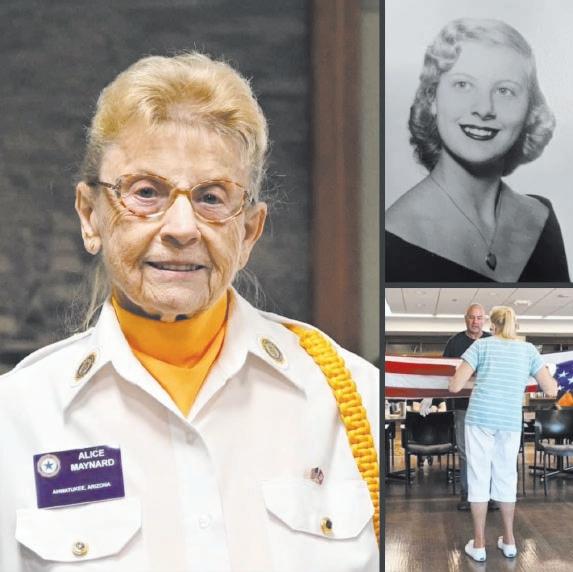
All I know for sure is that Alice’s contributions to our organizations and community will be sorely missed, fondly re-
membered, and greatly appreciated. Brenda Smull of Ahwatukee is commander of the American. Legion Post 64, which is based at the Ahwatukee Recreation Center
Ahwatukee Foothills Chamber of Commerce members are mourning the passing of one of their most active colleagues.
Dee Gordon, owner of the Sundance Spa & Salon, passed away Aug. 14 in her sleep. She was 82.
“Dee was an active member of the Ahwatukee Foothills Chamber of Commerce, for 25 years, where she served on the board of directors as well the Ambassadors group,” said Chamber President Andy Hayes.
“She tirelessly volunteered and helped to build the business community, here in Ahwatukee, as well as Women in Business,” he said, noting she also was active in Corpus Christi Catholic Church, where she was
named Phoenix Roman Catholic Diocese “Woman of the Year” and served on many of the church committees and host groups.
Ms. Gordon was named Businesswoman of the Year by the Chamber in 2017.
She started her business 30 years ago and the judges noted her passion for cosmetology “translates to over 100 repeat monthly customers which, in this day of social media ratings, is a true mark of success for a service business.
“With a philosophy of providing her clients ‘with an environment of total relaxation and comfort,’ she also has been active in the Chamber… helping Chamber members benefit from the many programs and services by volunteering
her time on committees.”
“Dee is very active in the community as demonstrated by her 20-year involvement with an Ahwatukee seniors group as president,” the Chamber judges said at the time.
A memorial mass will be held for her at 10:30 a.m. Sept. 6 at Corpus Christi Church, 3560 E. Knox Road, Ahwatukee, with a reception at the parish center immediately following.
In lieu of flowers, donations can be made to the Ahwatukee Chamber Community Foundation for Scholarships at the Ahwatukee Branch of AmTrust Bank, 4025 E. Chandler Blvd., Suite 33, Phoenix, AZ 85048 or the Ahwatukee Chamber Office at 1345 E. Chandler Blvd., Suite 207, Phoenix, AZ 85048.
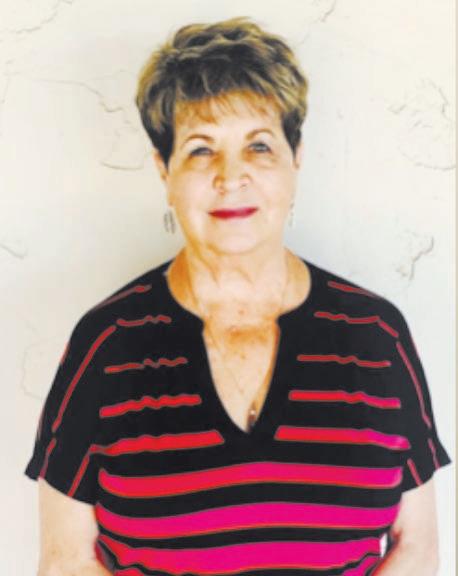
Information for sponsors and registration can be found at charitygolftoday. com/sponsor?e=11548&ce=f7ae7b
Saulsberry envisions Janice’s Women’s Center will offer victims comprehensive services that would include legal assistance, counseling, job training, childcare, and more.
Nonprofit weight-loss support program at Rec Center
A TOPS (Take Off Pounds Sensibly) Club chapter is meeting at 6 p.m. every Wednesday in the board room at the Ahwatukee Recreation Center, 5001 E. Cheyenne Drive. It’s preceded at 5:30 p.m. by socializing and optional weighin charts.
The 28-year-old Ahwatukee club offers education, fun contests and sharing of weekly progress at its meetings “without negative judgments.”
Information: Meg Hoffman at 602486-9100.
Ahwatukee Toastmasters offers growth opportunities
For over 35 years, the Ahwatukee
Toastmasters has maintained a continuous presence in Ahwatukee, providing the know-how, practice and encouragement to help members improve their communication and leadership abilities.
Toastmasters meets 7-8 a.m. every other Tuesday at Esperanza Lutheran Church, 2601 E. Thunderhill Place, Ahwatukee. For more information, call or text Ed Prestwood at 480-603-8359, or search Ahwatukee Toastmasters. The group’s chair is Jianhong Zhou, who can be contacted at smiqua.zhou@gmail.com.
Blood drive at Wild Horse Pass honors 9/11 victims
The nation will never forget the sacrifices made on Sept. 11, 2001, and a blood donation party in honor of the fallen and their families will be held 2-7 p.m. Sept. 11 at the Sheraton Grand Wild Horse Pass Conference Center’s Bird and Roadrunner rooms, 5594 Wild Horse Pass Blvd.
Make an appointment at bit.ly/9-11Blood-Drive.
As sole blood provider to 93% of Arizona hospitals in Maricopa County, Vi-
talant needs 600 donors daily.
Ironwood Library offers free activities for all ages in August
Ironwood Library, 4333 E. Chandler Blvd., Ahwatukee, presents a variety of programs for children, teens and adults. Unless otherwise noted, no tickets or registration is required.
Information: phoenixpubliclibrary.org.
Babies ages birth to 23 months, accompanied by a favorite adult, will enjoy songs, rhymes, books, and interactive fun Tuesdays 10:30-11 a.m. Free tickets are required and available 30 minutes before programs’ start times at the library’s information desk.
Toddlers ages 24-36 months, accompanied by a favorite adult, will enjoy songs, rhymes, books, and interactive fun Thursdays, 10:30-11:10 a.m. Free tickets are required and available 30 minutes before programs’ start times at the library’s information desk.
Young readers and listeners can sign up for reading time with a registered therapy dog/handler team. Read with Elsa every Tuesday, 4-5 p.m. Read with Raven Thursday 4-5 p.m.
Children ages 6-12 explore hands-on creative ways to design, experiment, and invent 2-4 p.m. Sept. 2, 9, 23 and 30 in this drop-in Science, Technology, Engineering, Art and Math (STEAM) program.
Adult readers 18 and over can meet up to share their thoughts about each month’s selection the first Wednesday of each month, 5:00-5:45 p.m. On Sept, 6 they will discuss “Eyre Affair” by Jasper Fforde, and on Oct. 4, “Skipping Christmas” by John Grisham.
Next Chapter Book Club
This inclusive community-based book club is designed for people ages
see AROUND page 34



12 and older with intellectual and developmental disabilities who have a desire to make friends, explore their community, and read (regardless of current reading ability). Every Wednesday, 3:30-4:30 p.m.
Sit and Stitch
Stitchers gather to work on their current project on the first and third Saturday of each month, 3-4:45 p.m. Knitting, crocheting, cross-stitch, needlepoint are all welcome.
Fall planting class
A master gardener will share techniques and additional resources for successful low desert Fall garden preparation and planting. Presented
by local community & sustainability nonprofit Keep Phoenix Beautiful. For adults and teens, Sept. 9, 11:30 a.m.12:30 p.m.
Ironwood Library Garden Fair
Prepare for the Fall planting season with a full day of free landscaping and gardening fun 10 a.m.- 4 p.m. Sept. 16.
Community experts will have information and conduct educational programs. Children 3-10 years old can enjoy a variety of hands-on activities throughout the day.
Monarch Butterflies class
Get ready for the fall migration of Monarch Butterflies, their life cycle, migration destination, and how to attract them to your yard. For adults and teens,
9:30-10:30 a.m. Sept. 16.
Tres Rios Wetlands
Learn about this lush and scenic rehabilitated environment in the heart of Phoenix, which has 150 different species of birds and animals among the cottonwood groves, willows, mesquites and reed-lined ponds and trails of this riparian area. For adults and teens, Sept. 16, 11:30 a.m.-12:30 p.m.
Reptiles and amphibians
Kids 3 to 9 can learn how reptiles and amphibians adapt to their desert environment 1:30-2:30 p.m. Sept. 16.
Desert lifestyle
Learn how to create and implement xeriscape plans as well as discover com-
mon water conservation barriers and solutions outside and inside the home. For adults and teens, 3:30-4:30 Sept. 16.
Saguaros class
Participants will learn what a Saguaro cactus is, why it’s important to the Sonoran Desert, and what animals use it 11:30 a.m.-12:30 p.m. Sept. 30.
Red Cross Blood Drive
People ages 16 and older can give the give blood at a Red Cross drive at the library 10 a.m.-3 p.m. Sept. 18.
Make an appointment at redcrossblood.org. Select the “Donating Blood” option to submit your appointment time. Walk-in donations are also welcome, as available. Masks are optional.


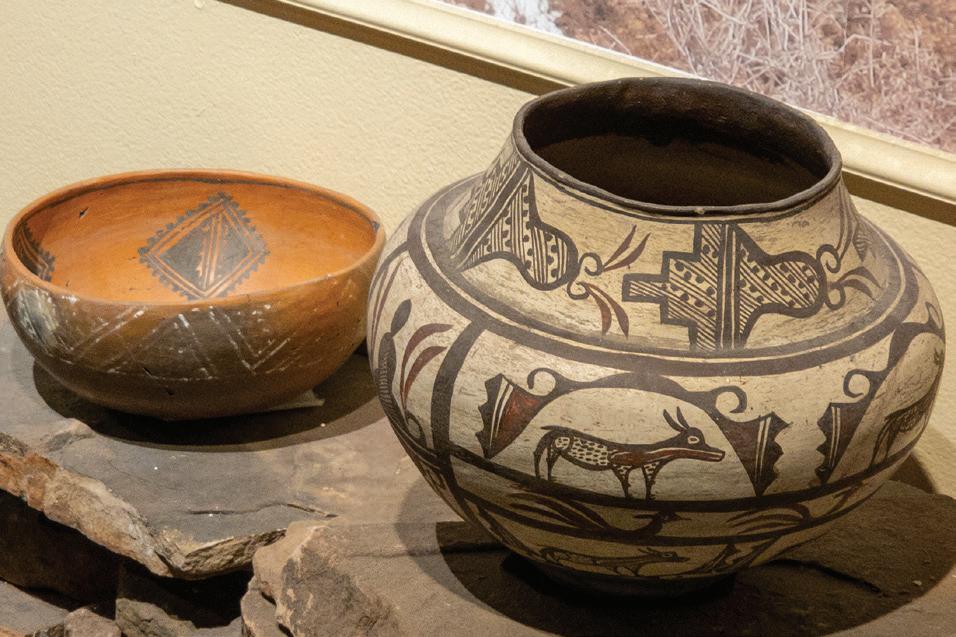















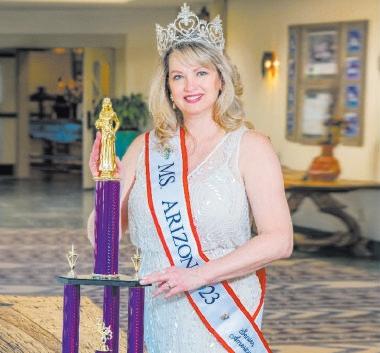


















Mountain Park Church ministry is a moving experience
“Whatsoever you do to the least of my brethren, that you do unto Me.” (Matthew 25:40)
I am saddened when I see homeless people on the street asking for aid. I usually give them a bottle of water and some cash, but my home church, Mountain Park Church in Ahwatukee, has grown a wonderful ministry called Hope for the Homeless.
On the third Saturday of every month, the church opens its lobby, and as many as 140 people from all over the valley come and pack 2,500 canvas bags with snacks, rst aid, personal hygiene items, water, blankets, and numerous other items that provide comfort to people living on the streets.

e operation is so e cient that bags packed in the morning are boxed, loaded in trucks, and shipped to organizations that support destitute people throughout Arizona.
Some of the Hope Bags are in the hands of those in need by the afternoon.
Packing bags is a family a air. Parents are encouraged to bring their young children. I talked to some of their parents, and they felt it was a perfect way to introduce them to volunteerism.
I was asked to interview a 10-year-old boy who comes every month and does every-thing that he is asked to do, from packing Hope Bags to taking trash to the dumpster, and does so with a cheerful heart and a wonderful work ethic. He testi ed that he wanted to help people, to make the world a better place.
Also, a group of volunteers cook and
prepare a nutritious home-cooked meal in the church kitchen on Saturday.
e meals are taken to Andre House on Sunday. Volunteers from the church routinely serve 200 or more people who live on the streets. No one is turned away.
On Sunday, I went down to Andre House, which is situated in a homeless tent area, to participate in serving the meal.
e conditions that the people are living in are heartbreaking, but I was moved by the respect and kindness the servers showed to people who are in such dire condition that it would cause many Americans to turn their heads and look away.
e meal was beautifully presented and much appreciated. I spoke to Mountain Park Church’s new pastor Charlton Scullard and asked him what he thought about
the ministry and why he supported it. He said, “I want the church to be a light in the darkness.”
e church also supports other ministries in the U.S. and in Honduras, Uganda, Mexico, Lebanon – all over the world.
Hope for the Homeless was founded in 2012 by a lawyer who had previously served the homeless community and a businessman who had his own challenges with homelessness.
Both felt called to make a di erence, to serve the least among us. is shows that everyone can do something to make the world a better place for all. e rst step is to care.
I feel privileged to be a part of a church community that tries to live the gospel in its day-to-day interactions with the world around them.
-Lisa Scinto








Richard Haavig was introduced to the Brazilian berry called acai when he was training in Brazilian Jiu Jitsu at Ares Arizona in Mesa.
“I enjoyed the taste and the nutritional health benefits of acai,” Haavig said.
His experience coincided with his pursuit of a degree in nutrition, as well as his desire to open a restaurant that serves healthy food.
When he learned about the opportunity to own Sunset Bowls, an eatery that features acai bowls, he jumped at the chance.
Sunset Bowls opened in Ahwatukee last summer and has been attracting a steadily increasing number of customers who are eager to try the wide selection of tasty acai bowls made with a choice of toppings, nut butters and more.
Haavig took over the location in May,
and, with the help of his sons, has been developing the quality of the brand ever since.
While Haavig realizes Sunset Bowls isn’t “the only game in town” when it comes to acai bowls, he said his stand out for a few key reasons.
“One is the quality of our acai. Several native Brazilians have expressed to me that our acai was the best they have had in town,” Haavig said, calling these compliments a “major feather in my cap.”
Sunset Bowls also offers eight fruit blends that Haavig said not only add unique and delicious taste combinations, but are also visually appealing when served in their clear bowls.
“The finished bowls have a beautiful aesthetic display, which makes for a fully stimulating experience,” he said.
Haavig said he is especially proud of the effort that goes into using only the
best possible ingredients that he can find.
“I strive to pick the healthiest options, opting for locally sourced products when available,” he said.
“I’m happy to have the opportunity to offer Laura’s Gourmet Granola, based in Tempe, as well as Spread the Love nut butters. Both are of the highest quality in their respective spheres.”
Currently, the most popular items at Sunset Bowls include the Boardwalk Bowl, which is a classic acai bowl filled with vanilla almond granola, berries, banana and peanut butter, as well as The Valley, which includes a delicious combination of flavors including acai, ube, blood orange and mango.
“During these hot summer months, the refreshing Ocean View with mango, coconut and blue pineapple bases, and

Chandler officials and the community are reeling from General Motors’ surprise announcement last week that it’s closing the IT Innovation Center and giving a pink slip to 940 workers at the end of October.
The announcement stunned city officials, who apparently will try to help the affected salaried employees while waiting to see what the auto giant will do with the 170,000-square-foot facility it leases on West Geronimo Place in the Price Corridor.
“Today’s announcement that GM plans to close its Arizona IT Innovation Center came as a complete surprise,” city Development Director Micah Miranda said Aug. 23 after the announcement by Stacy Lynett, GM vice president
of information and Digital technology.
“We’ve recently been working with their local team about higher education partnerships, mentoring, and a promotional video highlighting Chandler’s Price Corridor,” Miranda said.
“With this unfortunate news, we plan to work closely with our workforce development partners to assist with employment opportunities for those impacted.”
Employees also were stunned. “It was a complete surprise to literally everyone,” one worker posted on Facebook. “I called my manager immediately afterwards who is based in Michigan and even she didn’t know it was coming.”
City spokeswoman Toni Smith on Thursday said, “It is unfortunate anytime a Chandler resident loses their job.
In Chandler and across the region, there
is growth in the tech space and a high demand for workers with their skill set.”
And she stressed, “Our team has ongoing relationships with workforce development organizations and employers to help fill in-demand jobs. Our shortterm plan to help those affected by the GM announcement is to launch what we are calling a ‘digital job board” using our dedicated social media platforms (LinkedIn and X (formerly known as Twitter)).
“We will be encouraging local executives/employers to list their open roles within the comment section of posts made, so affected individuals can quickly identify career opportunities as well as engage directly with HR executives, hiring managers, and/ or current employees,” she added, urging workers to “follow our Economic Development social
media pages as we will continue to share career opportunities in Chandler.”
The GM center employed a wide range of professionals, including software developers, software developers in-test, data analysts, business analysts, product managers, project/scrum managers and software architects.
Lynette told GM employees, “This decision was not an easy one, but it will help to optimize our innovation center footprint and gain the efficiencies and effectiveness we need to have to continue to support the company.”
“We will be working with individual leaders on a plan to transition the work and knowledge,” Lynett wrote. “I am confident that together we can determine how to continue to deliver our
most critical initiatives.”
The website autonews.com said it was told by a GM spokesman the closing was part of an effort “to rebalance our engineering resources to better align with our growth strategy.”
The website also linked the “realignment” to some $2 billion in cost reductions GM plans by the end of next year, reporting thousands of salaried workers took voluntary buyouts and reduced the prospects of layoffs.
But GM spokesman Kevin Kelly was quoted by various news media as saying the Chandler closing had nothing to do with cutting costs and everything to do with streamlining.
He said GM found “some redundancies” as it began “rationalizing the number of” its innovation centers.
GM opened the Chandler site in 2014, saying on its website that it would support the manufacturer’s “IT needs including web technologies, end-user applications, dealer and factory systems and vehicle technology.”
Over time it virtually doubled the size of its workforce after starting out with
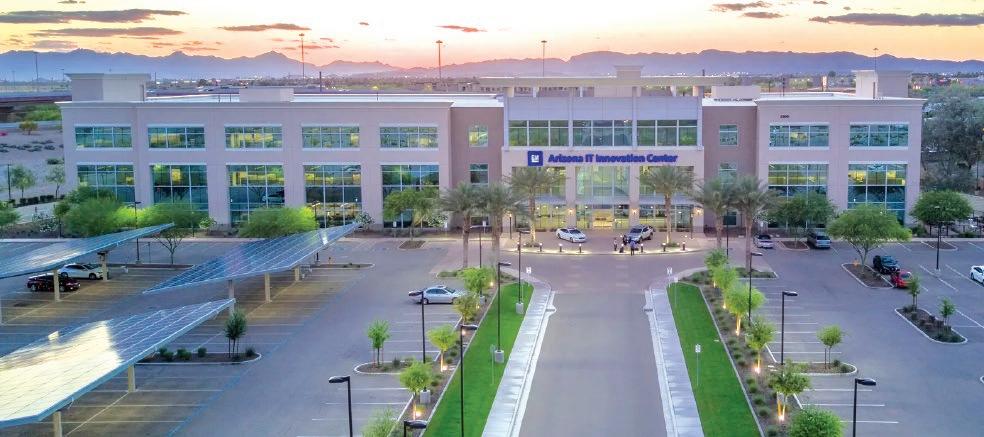
500 workers – a quarter of whom were college graduates.
“GM is in-sourcing about 90 percent of its 10,000 information technology workforce to boost innovation capabilities while also trimming costs,” the company said of an initiative it began in 2012.
GM said it had hired 7,700 information technology workers, including 4,600 at innovation centers.
“We have made significant progress transforming GM IT over the past 20 months,” said Randy Mott, GM’s senior


vice president of global information technology and chief information officer.
The company announced in 2013 that it was building the Price Corridor facility and said it would spend $21 million. It’s not clear if the company ultimately leased the building or sold it in a leaseback arrangement.
Last year, GM announced it was beefing up its Chandler facility, prompting jubilant reaction from city officials.
“We are excited to see GM continue to grow its Chandler IT Innovation Center

as part of its technology transformation,” said Mayor Kevin Hartke. “These jobs created by GM are high-wage, high-skill and provide tremendous employment opportunities for our residents. We appreciate GM’s significant investment in Chandler and look forward to being a partner in their continued growth.”
Hartke could not be reached for comment on the closure.
In the wake of GM’s announcement last year, the city said, “GM selected Chandler in part for its strong local workforce when it opened the site in 2014, and the company has found success recruiting from area universities, as many of the available positions are entry level.”
Umesh Murthy, director at the Arizona IT Innovation Center in Chandler, said: “Our IT Innovation Center in Chandler plays an integral role for the future.
“On top of the region’s deep existing pool of talent, Chandler offers a wonderful quality of life and strong community to newcomers. Those who join GM here will have an opportunity to pursue their passions and contribute to GM’s purpose.”
see GM page 39





GM from page 38
The company also said, “GM aspires to be the most inclusive company in the world, and in 2021, nearly one-third of all GM’s new hires in the U.S. were women, while 42% were from underrepresented groups.
This is not the first time GM has walloped the East Valley with a facility closure.
In 2009, the lights went out at the GM Proving Ground in East Mesa as it shut down a facility that for 56 years tested various parts of its brands for their ability to survive the harsh weather conditions that come with Arizona summers.
About 400 worked there at its peak, though only about a dozen were still around when it finally closed for good.
The 5,000-acre top-secret facility, surrounded by barbed wire and tall earthen berms, “played a much larger role in a lot of things that GM did than many people realize,” said then-Chandler city Councilman Jack Sellers and current county supervisor.
Since GM left the premises, the site has been divvied up among several developers for largely industrial warehouses and other related uses.

SUNSET from page 37
the Rip Tide made with Loco Coconut granola and pineapple have also been taking off,” Haavig said.
“And if you are looking for death by chocolate, the Balboa, which includes cacao and cacao nibs as well as other ingredients, takes the crown.”
Haavig said he hopes to continue to expand the menu in order to accommodate more of his customers’ tastes and cravings, as well as seasonal selections.
“One recent and major addition has been offering our delicious fruit smoothies; Mango Tango, Berry Bonanza, the PB & J and The Kiss of the Dragon. We are also excited to be serving cold brew coffee, again sourced from local favorite, Peixoto Coffee,” he said.
“We will be looking at the fall offerings from Laura’s Gourmet Granola, as well as introducing some warmed-up options, such as our oatmeal based bowls as things eventually cool down.”
Haavig said he is grateful for the enthusiastic support of his customers, some of whom come in daily or even multiple times a day. He is also happy to support




Jiu Jitsu athletes from the nearby Marcio Andre Academy.
“They come in hungry after hard training and enjoy the healthy recovery snacks I provide,” he said.
“I have the best customers anyone could hope for. Acai seems to attract the most positive souls and I’m so happy to
be in a position to interact with them on a daily basis,” he said
Sunset Bowls
Inside LA Fitness
4836 E. Chandler Blvd., Ahwatukee
480-584-9798
sunsetbowlsaz.com













Gov. Katie Hobbs said last week she is “concerned’’ about some of the effects on Arizona of a proposed merger of the state’s two largest grocery chains.
But the governor said she’s not ready to say whether she will oppose the combination of Kroger Co., the parent of Smith’s and Fry’s Foods, with Albertsons Companies, which operates not just stores under its own name but purchased Safeway and all the stores that company owned in 2015.
Her comments come as Attorney General Kris Mayes is conducting her own probe into the effects of the combination, not only on shoppers but the estimated 35,000 workers at both chains.
Other Arizona officials, however, are not waiting for that. Secretary of State Adrian Fontes and colleagues from six other states already have asked the Federal Trade Commission to block the proposed $24.6 billion deal where Kroger would purchase its competitor.
And on Aug. 23, a member of the state’s congressional delegation added his voice.
“I fear that, without competition in the grocery sector, large chains like the proposed Kroger-Albertsons conglomerate could monopolize entire regions of Arizona, then raise prices, close store fronts and eliminate jobs,’’ Rep. Ruben Gallego wrote to Lina Khan who chairs the FTC.
Gallego also gathered support for that position from the mayors of several Southern Arizona communities.
Hobbs, who said she shops at Fry’s, said, “Combined, these are one of the
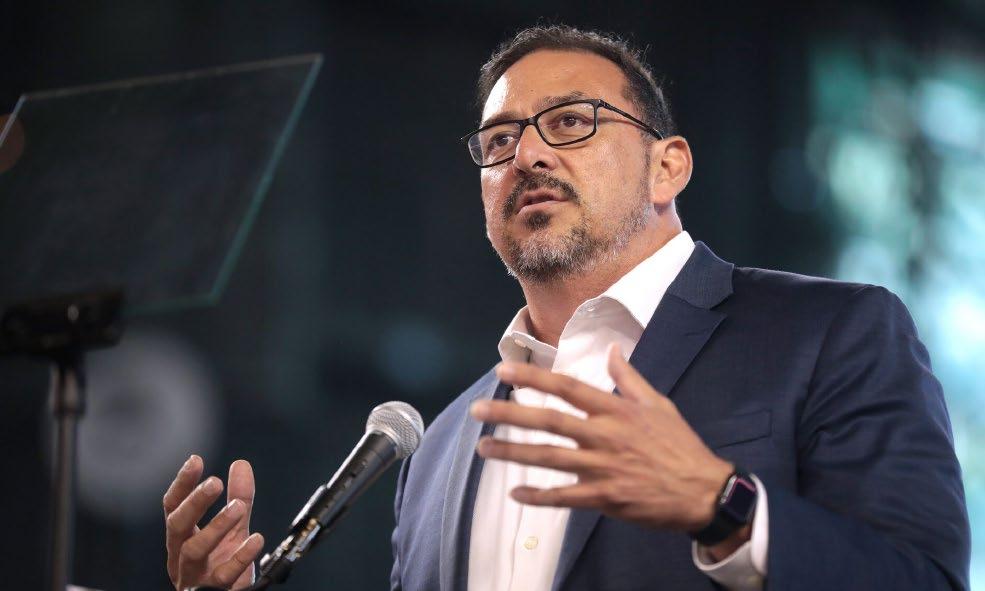
largest employers in the state. We’re concerned about potential loss of jobs and increasing prices, especially in rural areas that already have limited options for grocery stores.’’
That leaves the question of what Hobbs would want if she ultimately determines that the merger is not in the best interests of the state.
One option would be to ask the FTC to block the deal entirely. There also has been discussion of requiring the newly formed company to spin off some of its stores to others to ensure that some competition remains.
Hobbs sidestepped what she is thinking.
Mayes said last week that a series of “town halls’’ she has conducted across the state seeking input on the deal has


when the merger was first announced.
That goes not just to the question of whether the combined operation, no longer competing for customers with each other, would be free to raise prices.
Mayes said that decisions by the new company to shutter some stores could mean much longer drives to get food.
But she said it isn’t just the people shopping there who might be affected.
“We’re going to be getting input from the dairy operators in Arizona and the farmers and cattle growers who are worried about the reduction in competition in Arizona and the reduction in the number of outlets for their products,’’ Mayes said.
What also needs to be considered is what competition would remain in Arizona.
produced a consensus of sorts.
“Nearly universally, I’ve heard opposition to the proposed merger, coupled with real concerns for potential job losses associated with combining the two companies,’’ she said. “I’ve heard from seniors on fixed incomes worried that grocery prices could rise if the merger goes through.’’
And then there’s the question of access.
Mayes said she’s heard from individuals, particularly in rural areas, that if a neighborhood grocery store were to close that would force them to have to walk or drive much further to buy basic necessities.
And she said even military families have concerns that the merged entity might not accept their insurance to cover prescriptions.
The attorney general said she anticipates making a decision on what action to take, if any, by the end of the year, ahead of the scheduled 2024 to complete the merger.
Mayes could have some powers of her own.
Arizona law forbids any “contract, combination or conspiracy by two or more persons in restraint of, or to monopolize trade or commerce.’’
“The people of Arizona have important input to make here, people who live in the neighborhoods where a Fry’s or a Safeway or a Smith’s could be shut down,’’ Mayes told Capitol Media Services at the time
Bashas’ operates 118 stores, mostly in Arizona, under that name as well as Basha’s Diné Market, Food City and AJ’s Fine Foods.
Kroger earlier this year said the merger “provides meaningful, measurable benefit to all stakeholders, including lowering prices, providing more choices and establishing a more competitive alternative to large, non-union retailers.’’
That last comment is in reference to Walmart, though not all Kroger stores are unionized, either.
Kroger CEO Rodney McMullen said the deal will “deliver superior value to customers, associates, communities and shareholders.’’
It also claims that after the deal is closed, Kroger will invest $500 million to lower prices, $1.3 billion into Albertsons stores “to enhance the customer experience,’’ and $1 billion “to continue raising associate wages and comprehensive benefits.’’
In their original announcement, the retailers said they are willing to divest up to 650 of the stores to overcome regulatory concerns.
None of the possible locations have been announced.
But even if that happens, that is no guarantee the stores will stay open.
When Albertsons bought Safeway, it agreed to sell 146 stores to Haggen, a regional grocer. But Haggen eventually went bankrupt and Albertson’s bought back many of the stores.
Many young adults lack financial preparedness. In fact, more than half of teenagers in the US feel unprepared to finance their futures.
The good news is, financial literacy resources are abundant: libraries are wellstocked with financial self-help books, experts are widely available at local financial institutions and search “financial literacy.” You’ll find more than 50 million videos waiting on YouTube.
Deciding where to start your financial journey can be as overwhelming as lacking financial literacy.
The key is to get started sooner rather than later. So, why not start now?
The following is a helpful guide for those starting their financial journey.
Setting financial goals. Just like a long road trip, a financial journey requires a road map or financial goals. In the beginning, these should be small, obtainable short-term goals. That’s because the act of
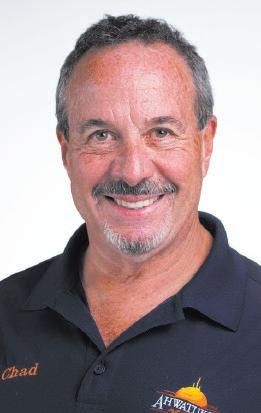


achieving these goals will instill a sense of pride, as well as a firm understanding of the importance of goal setting.
As your financial understanding grows, so should your goals.
Talk to a trusted adult or financial counselor, take a financial literacy class or attend a webinar to educate yourself throughout the process.
Studies show that those who write down their goals are more likely to achieve them than those who don’t.
Budgeting/saving. A crucial tool in a financial arsenal is the spending plan, often referred to as a budget.
The concept of budgeting is simple: what comes in should be more than what goes out. A spending plan should track expenses, ensuring you have enough to cover debts and purchases.
Just as importantly, a budget should determine how much money you can save. The amount will vary depending on financial goals or how much is left over after expenses.
Many financial programs prioritize

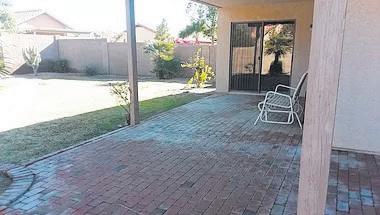

emergency savings as a crucial first step to financial freedom. An emergency fund will help reduce stress when a financial emergency arises, like an unexpected car repair or medical bill. It is not a matter of if a financial emergency will occur but when, and you’ll want to be ready.
After creating a monthly savings budget, deposit the designated amount directly into your savings account. This can be done through an employer’s payroll or by setting up an automatic transfer from checking to savings accounts through your financial institution.
There are countless budgeting apps and tools online. You can learn more about budgeting and download a beginner’s budget worksheet by visiting desertfinancial.com/hub.
The tools you choose don’t matter; it’s the act of getting started that does.
Borrowing/investing. After setting financial goals, creating a budget and building your savings, the next step is to learn about borrowing and investing.
In many cases, borrowing becomes neces-
sary for large purchases, like buying a home.
Maintaining good credit is essential in receiving these types of loans. Paying bills on time and responsibly using a secured credit card are the keys to good credit.
While retirement may seem far off, investing sooner rather than later will pay off in the end. Many employers include a match when investing in retirement. Take advantage of that match and you will be in a better financial position down the road.
Financial advisors can tailor advice to individual budgets and financial goals, taking the guesswork out of a typically overwhelming process.
Remember to start small, map out the money that comes in vs. what goes out, and pay yourself at regular intervals.
Controlling your finances is a lifelong journey. Start now and stick with it. Your future self will thank you.
Lori Calhoun is the community development communications program manager at Desert Financial.






Eric Lauer was eager to see how his team would respond with just over 30 eligible players playing iron man football on the road at Valley Vista Friday night.
There were mistakes. Some players came away battered and bruised. But most importantly, the Pride started the season on a high note beating Valley Vista 24-13 to start the season in the win column.
“We don’t have a lot of depth right now,” Lauer said. “We had to go to some younger guys. That was the first time kinda meshing with these new guys. Defense played well and turned them away often.
“I can’t wait to get back and look at the film. There were a lot of things there it just wasn’t clean.”

Mountain Pointe’s defense started the game strong forcing a safety by Valley Vista on the first snap of the
game. From there, a first look at the explosiveness Zeke Rodriguez – a transfer from Casteel who was ruled
eligible by the Arizona Interscholastic Association after a hardship appeal –showed what the junior athlete brings to the Pride offense in terms of explosiveness.
He took a jet sweep 40 yards for a touchdown. But it was called back due to a penalty. The first mistake for the Pride on the night.
Mountain Pointe regrouped and extended its lead thanks to a 6-yard run by senior Christian Clark, the Pride’s University of Texas commit. But that would be the bulk of the action Clark saw Friday night.
On Mountain Pointe’s second series, he took a helmet to his knee. Lauer said there was no structural damage and Clark could have returned to the game. But with fellow running back Randle Parker, also a Division I recruit, sidelined
Things went from bad to worse in the first quarter of Desert Vista’s season opener against Perry Thursday night.
A 78-yard opening drive by the Pumas tilted all momentum to their side, which they never relinquished as they quickly capitalized on miscues and turnovers from Desert Vista. The Thunder dug themselves into a hole after allowing Perry to start four of its five first-quarter offensive drives in positive territory.
In the end, Desert Vista was unable to overcome the mistakes, losing its season opener 51-13 to Perry in Scooter Molander’s first game as head coach.
“A lot of first game starts for a lot of our guys … made some mistakes,” Des-
ert Vista Head Coach Scooter Molander said. “When you have a talented team like Perry, you can’t do that. We’ll learn from it.”
Perry put the game away early.
After Desert Vista’s first drive resulted in a punt, Perry junior quarterback Diesel Taylor connected with junior wide receiver Hayden Moon for a 27-yard score.
Desert Vista senior quarterback Zach Brown was then picked off by Jaiden Quiba. Two plays later, Tinsley punched it in from a yard out.
The onslaught in the first quarter didn’t end until Perry had taken a fourscore lead. Three of those came behind the legs of Tinsley, who finished with 58 yards for the quarter and 78 overall for

Ray Ng has always thought of ways to provide the best possible experience for young baseball players in Ahwatukee.
He did so when he served as the president of Ahwatukee Little League and continues to do so now after his term has ended. The league had success with him at the helm, but Ahwatukee Park — the home field of the league — was missing something: Proper batting cages.
So, Ng thought of where he could open a space that could be used year-round for hitters and pitchers in both baseball and softball. He found it in the old Ace Hardware on the northwest corner of 48th Street and Warner.
It was divided into two with a wall. On one side, a swim school went in. The other, the three men introduced the community to Full Count.
“We’ve known for a few years there’s nothing like this anywhere in Ahwatukee,” Ng said. So if I wanted to go hit at night and there’s no lights, I would have to drive 20 to 25 minutes to the nearest batting cage.
“When we saw this space open, and
with Ahwatukee Little League being so close, it just made sense.”
Ng’s vision first began three years ago. He thought of the concept but had no clear path of bringing it to fruition. That is, until he recruited Doug Larimer and Dave Austin to join him.
They didn’t hesitate.
The three men, who all have close ties to Ahwatukee Little League and youth baseball in the city, began planning what the space would look like. Ng said once they acquired half of the old Ace Hardware, he drew up what he envisioned Full Count to look like on a piece of paper.
Austin and Larimer were all in with the concept. Now, a year-and-a-half later, the inside looks similar to what Ng drew up.
“Ray’s been talking about this for years and every time he did, I said, ‘This would be really cool,’” Larimer said. “A month and a half ago this was a big concrete space. We walked in and thought it was impossible. A week and a half ago the turf came in then the nets got anchored down.
“We walked in, and I couldn’t believe it was the same space. We went from an empty concrete room to something that

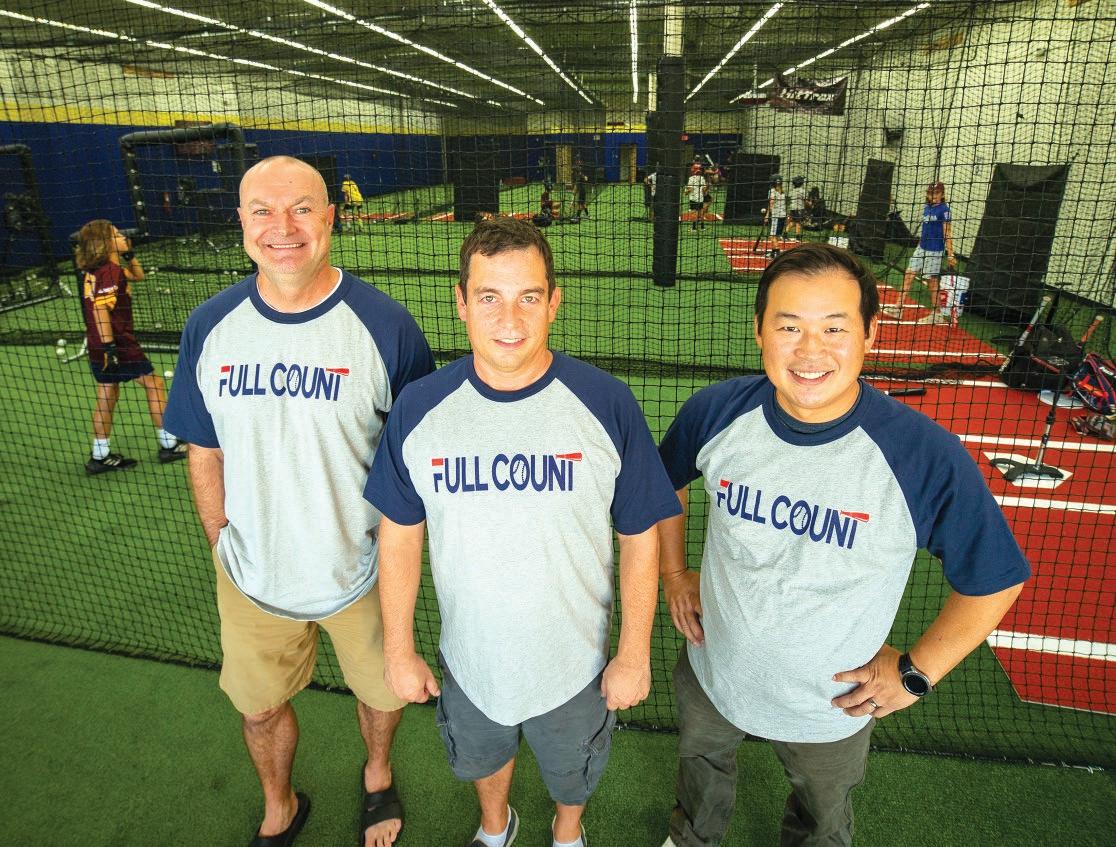
is going to be great for the community and great for the kids.”
The space features multiple cages with heavy duty nets all around. Each one has its own pitch machine. There are also tees to hit balls.
There are different sized cages to cater to kids of all ages, from Little League up to high school and college, as has been the case with South Mountain Community College players utilizing the space alongside the youth and players from the three high schools in the community – Mountain Pointe, Desert Vista and Horizon Honors.
It is also equipped with HitTrax technology to give instant feedback on swings and pitches. Ng said it is similar to the technology used at TopGolf to measure the distance of a drive in real time.
They left no stone unturned when designing the layout and features of Full Count. Their main goal was to provide the best possible experience that can be utilized year-round.
“The feedback has been awesome,” Austin said. “They can get out of the heat. The big thing is this community needed
a baseball anchor in the neighborhood. Whether you’re at one of the big guys or at the smaller schools, there’s something for you here.”
Along with co-partner of Full Count, Austin is also the head coach of the Horizon Honors middle school baseball team. He said his players will reap the benefits of the space because the small charter school doesn’t have the same type of facilities as Desert Vista and Mountain Pointe.
Larimer has been involved with Ahwatukee Little League for several years. He was an assistant coach for numerous teams his two kids have been on. His youngest also plays for the Ahwatukee Devils, a club program.
All three men said it’s been an overwhelming experience to see their vision come to life with Full Count.
“It means a lot,” Ng said. “I still have (the first drawing of Full Count) posted on my wall in my office. The most rewarding part of this is watching the kids smile. You see them smiling when they walk in and you see them smiling when they walk out drenched in sweat because they know they got a good workout in.”
Ahwatukee resident Gary Yeager, 73, found himself in a dark place 10 years ago.
He was diagnosed with Fibromyalgia, a chronic condition that radiates pain all throughout the body and makes those with the illness lethargic. Medications caused adverse reactions and he was forced to use a walker to move around. It was also during this time his wife of 37 years passed away, spiraling him into an even bigger hole mentally.
He contemplated life over the course of three months until he decided it was time for a change. He joined the Mountainside fitness in Ahwatukee when it opened and hired a personal trainer.
Over the course of eight months, he worked out with the trainer three days a week. Finally, the former college football and baseball player found happiness again.
“It was amazing,” Yeager said. “I dropped 75 pounds, and I was walking three, maybe five miles a day. Sometimes I would walk 10 miles. It was amazing.”
Being able to move around, Yeager saw an advertisement for a 5K race in Chandler. He signed up, not knowing what to expect from his body. But he was also confident.
He stopped with the medication during his time with his trainer and he saw improvement almost immediately. He no longer needed the walker and the pain had subsided enough to allow him to move around more freely.
The 5K, however, was a big step in getting back to where he was when he was younger. But it was a step he knew he needed to take.
“I just had a smoking time,” Yeager said. “I said, ‘Wow, there’s something to this.’ I’ve been racing just about every Saturday since.”
Running wasn’t always enjoyable for Yeager. Growing up a multi-sport athlete, it was often used as punishment by coaches.
After high school he went on to play college football and baseball at a school in West Virginia, his home state. But only days into fall camp he realized playing football at the next level may not have been the best decision for the 155-pound

wide receiver.
He was left battered and bruised by the bigger players. Even coaches who recruited him suggested walking away. So, that’s what he did. He transferred to Marshall University where he played only baseball and graduated in 1971. Months before that, the infamous plane crash that killed 75 people – 36 of which were Marshall football players – took place. A physical education major, Yeager knew many of those killed in the crash.
He went on to have a long career as a high school football and baseball coach in Ohio before joining the Air Force for a year. He then entered the corporate world where he dabbled in company softball.
To this day he thinks about the first time he went back home to West Virginia and ran around the track before compet-
ing in the Hatfield McCoy Marathon. It was the first time he was voluntarily running without being punished.
“Running always had a negative connotation,” Yeager said. “When I went home to run a race in my hometown I was working out and running around the football field. I had a mental note and said, ‘This is the first time I’m running around the field without someone hollering at me.’”
Since his first marathon and 5K, Yeager has taken racing seriously.
He won his first 5K at age 69. He recently competed at the 2023 National Senior Games in Pittsburgh. Before that, though, he injured his knee playing baseball. It required surgery and a fourmonth recovery.
Despite the injury, Yeager performed well and was one of 28 athletes selected
to be named a Humana Game Changer, which is given to those “who exemplify healthy aging and provide encouragement, motivation and inspiration for all to age actively.”
“I’m not world class,” Yeager said. “I just have a story and here I am.”
Along with racing every Saturday around the Valley, Yeager has also participated in the Men’s Senior Baseball League World Series.
His baseball training will pick up heavily in the next few weeks. For now, he works out at home with a whiffle ball or at local batting cages twice a week.
Yeager said his decision to become active again saved his life.
“Sports made me happy,” Yeager said. “That’s what brought me out. I know where my happy place is and that’s what’s key.”
PRIDE from page 42 with a groin injury, Lauer decided to not risk Clark’s health for the rest of the season and held him out.
That opened the door for young backs to see playing time. Junior Marion Gillespie was one of those backs.
“(Gillespie) and Zeke (Rodriguez) were the main ballcarriers tonight,” Lauer said. “They didn’t expect it, they were supposed to be the slot type of players and neither one has had a lot of touches. They were thrust into that spot and they did a good job for us.”
Junior quarterback Robert Knorr, a transfer from Maricopa, made his debut with the Pride Friday night. He completed 6 of his first 7 passes and ended the night with over 140 yards through the air.
He connected with wideout Javier Jones for his first touchdown pass as a member of the Pride. Later in the game he found Rodriguez for a 25-yard strike.
Lauer said the junior showed poise and his ability to lead Mountain Pointe in a real game situation. That will be needed yet again next week when the Pride go on the road to Palm Springs, Calif. to face Palm Desert High School.
“We talk about team 31, this is team 31. They get to make it what they want it to be,” Lauer said. “We’re going out of state and there are good California teams.”
Lauer remembers all too well the last time Mountain Pointe went on the road early in the season.
Last year, they traveled to Las Vegas to face Arbor View as part of the Polynesian Classic. It was the debut game for the likes of Clark, Parker and others who hoped to restore Mountain Pointe’s identity as a power in the state.
Instead, they were on the receiving end of a 45-16 thumping.
Lauer said memories from that game haven’t yet been brought up to his players. Especially because most have now graduated. But he knows it’s in the back of the minds of those who returned from last year’s team.
He believes they will take a different mindset into the Palm Desert game and not allow the lure of traveling out of state distract them from their goal.
“We won’t take anything for granted,” Lauer said. “We’ll get ready for a nice little road trip.”
THUNDER from page 42
the game.
Perry scored on four out of its five firstquarter drives. All but one — the opening drive of the game — started in Thunder territory.
“Our motto this year is ‘relentless and scrappy,’” Perry Head Coach Joe Ortiz said. “We were more physical than we’ve ever been, we executed the best since I’ve been here. We have a long way to go but Perry hasn’t played like this in a while.”
Desert Vista managed to put together a strong drive that ended at the 1-yard line when senior running back Isaac Acedo was stopped short of the line to gain for a fresh set of downs.
But with Perry backed up against its own end zone, the Thunder defense forced a punt that left the offense in good field position. A short drive later and sophomore running back Kyler Drunasky punched it in from a yard out for the first points of the season.
Drunasky found himself as the third running back in the rotation to start the game behind Acedo and junior Lucas Schiermeyer. But by the midway point of
the second quarter, he received the bulk of the carries.
He ran hard as Desert Vista’s offensive line opened holes for him at times. He finished with a hard fought 30 yards on 10 carries but opened the eyes of Molander.
“He’s really tough and he’s just gotten better and better,” Molander said. “We challenged him to improve the running game in all facets and he’s stepped up every time.”
Much of Desert Vista’s downfall was due to the relentless pressure from Perry’s defense. Play after play linebackers and defensive ends would speed rush around the edge, forcing Brown to make off-target throws or take sacks.
Desert Vista had seven turnovers total on the night, four of which fumbles and three interceptions. Most gave Perry a short field, which the Pumas capitalized with on multiple occasions.
The lopsided loss wasn’t what Molander had imagined for his debut as Desert Vista’s coach. But there were some positive to take away from Thursday night’s game.
The Thunder have young talent all over
the field, including Drunasky and freshman cornerback and wide receiver Max Sprott. They also have a senior class that never let morale get too low on the sideline despite Perry’s lead building.
Brown also appears to have good chemistry with his wide receivers. That was made apparent when he connected with junior Aeneas Redmond for an 80-yard touchdown late in the fourth. He finished 10-of-20 for 162 yards and the lone touchdown. However, he was picked off three times. Redmond had five receptions for 112 yards and the score.
Molander said his team will try to build off of the positives and fix the negatives.
“I liked how we kept fighting ‘til the very end,” Molander said. “We have a lot to clean up. It’s not an easy pill to swallow but we’ll build and get better.”




The blues has always been a music form that’s found its proponents having a healthy respect of its roots and history, particularly with younger musicians being sure to pay homage to the elder statesman of the genre.
Many of those musical pillars have become names in a history book, be it Muddy Waters, Howlin’ Wolf or the three Kings — Albert, Freddie and B.B.
Buddy Guy, who turned 87 July 30, he remains one of the last pillars of the rich Chicago blues music scene that had the storied Chess Records as a cornerstone.
Now he is on his “Damn Right Farewell Tour,” that gures to mark an end to the kind of busy touring schedule that has been routine for much of Guy’s sixdecades-plus career.
“ e way they treat the blues now, you don’t hear it on your big radio stations anymore,” Guy said.
“Your big AM/FM stations don’t play blues hardly anymore. So, whatever little I can do to help keep blues alive, I’m open for it.”
A PBS documentary showed Guy’s life to be a fascinating tale. In addition to original interviews with Guy, the lmmakers trace the guitarist from his origins working the Louisiana elds his sharecropping family plowed (and where a portion of highway was named after him in December 2018) to the thriving 1950s Chicago music scene he arrived in with nothing but a guitar in his hand and the suit on his back.
It was here that he got his rst break, when Waters took the 21-year-old fretbender under his wing.

“Sixty- ve years ago last year I’d just gotten to Chicago and I wasn’t looking to be a professional musician,” Guy recalls.
“I’d left Louisiana because they told me I could go to Chicago, get a day job and wouldn’t have to pay to see Muddy Waters, Little Walter, Sonny Boy Williamson and all those guys. I was looking for a day job because I didn’t never think I was good enough to play with them.
“But I learned how to play Lightnin’ Hopkins, Jimmy Reed and a few Muddy Waters licks. I hadn’t eaten in three days and a guy took me to the 708, a famous blues club on 47th Street in Chicago. I went up and played a number with the late Otis Rush and somebody called Muddy Waters, who was living about ve blocks away. He got out of his van and
because he heard I was telling people how hungry I was, he brought me a bologna sandwich.”
Word of Guy’s guitar prowess got around, and after a brief stint recording a few sides for Cobra Records, Guy landed at Chess courtesy of Waters, who favored the young musician.
Guy’s combination of tasty playing and over-the-top showmanship made him a favorite of the British Invasion triumvirate of Jimmy Page, Je Beck and Eric Clapton, as well as stateside guitar god Jimi Hendrix.
And while Guy is a humble man, he’s quick to acknowledge his abilities as well, particularly when asked what he thought about Hendrix the rst time they met in 1968.
“You should ask what he thought of me because he told me he came from a gig to come see me play because he’d picked up some things from me,” Guy said.
While blues may have fallen out of favor in the ’70s and ’80s, Guy experienced a comeback in the ’90s, beginning with the release of his 1991 album “Damn Right, I Got the Blues,” his rst recording in nearly a decade.
Featuring cameos by Clapton, Beck and Mark Knop er, the album is credited with kickstarting a blues rebirth.
Guy has released a steady stream of albums since then, won eight Grammy Awards, earned a Rock and Roll Hall of Fame induction and played for fellow Chicagoan, President Barack Obama (“I always say I went from the outhouse to the White House”).
Having never stopped touring, even during his lean years, Guy understandably had slowed his pace some in recent years, but his re for playing guitar and spreading the blues gospel hasn’t waned.
Following on the heels of the PBS lm is “ e Torch,” a documentary that examines the guitarist’s ongoing in uence on the blues and includes interviews with a number of musicians including Carlos Santana and Susan Tedeschi.
As for what folks can expect coming out to see this living legend do his thing on stage, Guy promises prime rib in a world of Spam.
“Folks can expect the best that I got,” he said. “My dad told me this and I’ll tell you the same thing he told me before I learned how to play when I was driving the tractor and plowing the elds in Louisiana. He said, ‘Son, don’t be the best in town. Just be the best until the best come around.’”
WHEN: 8 P.M. Friday, Sept. 8
WHERE: Celebrity Theatre, 440 N. 32nd St., Phoenix
COST: Tickets Start At $35
INFO: celebritytheatre.com
ACROSS
1 “Waterloo” group
5 Director Craven
8 Kilt wearer
12 Borscht base
13 Chop
14 Ginormous
15 Baltimore seafood treat
17 Congers
18 “-- Little” (film)
19 Sweet-sounding
21 Toe count
22 Jazzy Fitzgerald
23 Lobbying org.
26 Stir-fry pan
28 Succinct
31 “American --”
33 Peruke
35 June 6, 1944
36 Casual shirts
38 Ran into
40 Fr. holy woman
41 Unhappy destiny
43 Arrest
45 Yell, “You’re not funny!”
47 Believes (in)
51 Regrettably
52 Unambiguous
54 Marathon fraction
55 Bee follower
56 Judicial garb
57 Shopper’s delight
58 Be sick
59 “Closer” actor Clive
DOWN
1 Grade-school basics
2 Ernie’s pal
3 Boyfriend
4 Facing the pitcher
5 Impatient inquiry
6 “A spider!”
7 Bjorn Borg, for one
8 Like ready-to-eat walnuts
9 Actor’s visual aids
10 Leer at
11 Try out
16 Ship’s sta
20 Last (Abbr.)
23 “Great Expectations” lad
24 Fuss

25 Telemarketer’s tactic
27 Kipling hero
29 Perched
30 Needle hole
32 Quick glance
34 Refined
37 Costa del --
39 O’Hara estate
42 Pilgrimage site
44 Small pack animal
45 Easter entrees
46 Director Kazan
48 Garbage barge
49 Toothpaste holder
50 British gun
53 Floral necklace



Imay have to confess something here. I love chocolate chip cookies when they’re the soft, chewy, sink-yourteeth-into-type.
But that’s not the confession.

I would really love chocolate chip cookies even more… without the chocolate chips. I know that sounds crazy, but I’m absolutely nuts about the actual batter. So when I make up a batch of chocolate chips for friends or family, I steal a couple of spoonfuls of the batter before I put the chips in. I bake up the “naked” ones, and then gobble them up right out of the oven. (Confessions are so freeing!)
The one exception I have is this recipe for whole wheat chocolate chips. It was sent to me by Arizona resident Wendy Putler. She shared with me the story of how one day she and her mom got into a conversation about who makes the best chocolate chip cookies.
Ingredients:
• 1 ½ cups all purpose flour
• 1 1/2 cup whole-wheat flour
• 2 teaspoons baking soda
• 2 teaspoons salt
• 2 cups butter
• 1 ½ cups brown sugar
• 1 ½ cups white sugar
• 4 eggs, room temperature
• 2 teaspoons vanilla
• 2 cups chopped walnuts, toasted
• 1 ½ lbs Ghirardelli semi-sweet chocolate chips
• 4 cups rolled oats (not instant)
Directions:
In a bowl, mix together the all-purpose flour, whole wheat flour, baking soda and
Wendy’s mom declared that she makes the best ones. Wendy begged to differ and told her mom that she actually made better cookies than her mom.
Once they compared recipes, they discovered that the recipe was identical. They had both found it in a 1964 Boston Globe newspaper, I’m not sure who won battle/chocolate chip, but I think you and I came out the winners here with a recipe we can really sink out teeth into.
salt. In the bowl of a stand mixer, cream together the butter and both sugars until light and fluffy. Add vanilla and eggs, one at a time, mixing well. Add the combined dry ingredients and mix to incorporate. With a spatula, stir in oats, walnuts and chocolate chips, mixing to combine.
Roll cookies into approximately 1 ½ inch balls. Freeze the dough until hardened. Preheat oven to 375 degrees. Line a sheet pan with a silpat or parchment paper.
Arrange cookie balls, leaving about 1 inch in between. (Do not flatten cookies.) Bake for about 9-11 minutes. When cool, store in a well sealed container or ziplock bag. (Dough can be frozen and baked up later.)

















































480-898-6500
obits@timeslocalmedia.com
Deadline: Thursday at 10am for Sunday Pets are family — they fill our days with love and joy.
No one ever wants to imagine their pet sick or injured. But with Physicians Mutual pet insurance, you can help keep your pet healthy and happy.


Deanna (Dee) Gordon











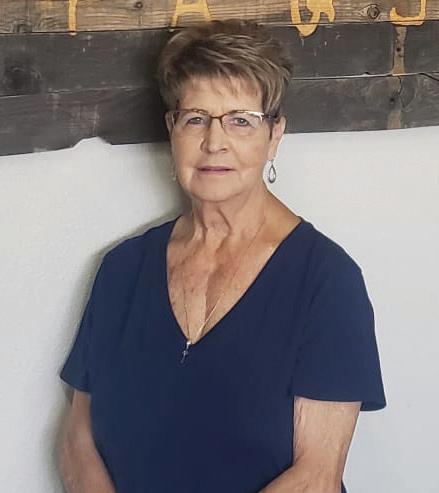







Deanna (Dee) Gordon, owner of Sundance Salon and Spa, passed away on August 14th, she was 82.




Dee was an active member of the Ahwatukee Foothills Chamber of Commerce, for 25 years, where she served on the Board of Directors as well the Ambassadors group. She tirelessly volunteered and helped to build the business community, here in Ahwatukee, as well as Women in Business. She was very active in Corpus Christi Catholic Church, where she was named Phoenix Roman Catholic Diocese “Woman of the Year” and served on many of the church committees and host groups.
Mass will be held, for Dee, on September 6th at Corpus Christi Church at 10:30 am located at 3550 E Knox Rd, Ahwatukee, AZ 85044. A reception will immediately follow at 11:50 in the Parish Center. Please join us in celebrating the life of Deanna.
In lieu of flowers, please consider contributions to the Ahwatukee Chamber Community Foundation for Scholarships at the Ahwatukee Branch of AmTrust Bank at 4025 E Chandler Blvd Suite 33, Phoenix, AZ 85048 or the Ahwatukee Chamber Office at 1345 E Chandler Blvd STE 207, Phoenix, AZ 85048. Attn: Enery Lopez
Premier
but < 100%/wk.
http://bit.ly/MSJobs-Prem_Field_Eng
http://bit.ly/MSJobs-Customer_Eng
Multiple positions available. Some positions req travel and/or permit telecommuting. For details (if applicable), including job descriptions & min reqs, salary range & benefits info, and how to apply, access job posting using website address listed. EOE.







